
FACETTESN°7
Direction de la publication
Jérôme de Lavergnolle.
Comité de rédaction
Sixtine Dubly, Frédérique Dupeyron, Maud Laurent, Anne Lhomme, Pierre Parra, Céline Sanchez.
Coordination générale
Frédérique Dupeyron, Maud Laurent, Anne Lhomme, Pierre Parra.
Rédaction en chef
Sixtine Dubly.
Direction artistique
Anne Lhomme, Maud Laurent.
Conception graphique
Lysiane Bollenbach.
Textes
Sixtine Dubly, Anne Lhomme
Photographies et illustrations
Julie Bouchardon, Delphine Chanet, François Charbonnier, Laetitia
Danglade, Antoine Denoual, Lucie Kerzerho, Jean-Philippe Mesguen, Théo Petit, Christopher Sturmann, Maxime Tétard, Lamia Ziadé.
Secrétariat de rédaction Claire Letourneux.
Traduction
Transperfect.
Impression
Desbouis Grésil (Montgeron).
Couverture
Jean-Philippe Mesguen.
Dépôt légal 2e trimestre 2022.
Toute reproduction interdite.
Publishing Director
Jérôme de Lavergnolle.
Editorial Board
Sixtine Dubly, Frédérique Dupeyron, Maud Laurent, Anne Lhomme, Pierre Parra, Céline Sanchez.
Coordination
Frédérique Dupeyron, Maud Laurent, Anne Lhomme, Pierre Parra.
Editor-in-Chief
Sixtine Dubly.
Artistic Direction
Anne Lhomme, Maud Laurent.
Graphic Design
Lysiane Bollenbach.
Text
Sixtine Dubly, Anne Lhomme
Photographs and illustrations
Julie Bouchardon, Delphine Chanet, François Charbonnier, Laetitia Danglade, Antoine Denoual, Lucie Kerzerho, Jean-Philippe Mesguen, Théo Petit, Christopher Sturmann, Maxime Tétard, Lamia Ziadé.
Text editing Claire Letourneux.
Translation
Transperfect.
Printed by Desbouis Grésil (Montgeron).
Cover Jean-Philippe Mesguen.
Legal deposit 2nd quarter 2022.
All reproduction prohibited.
Credits /
ÉDITO
Ensemble
« Tu me dis, j'oublie. Tu m'enseignes, je me souviens. Tu m'impliques, j'apprends. »
Cet adage nous rappelle une notion « être et faire ensemble » — qui nous a été soustraite pendant deux ans, lors de la pandémie, nous faisant prendre conscience de la fragilité de ce qui nous paraissait naturel et acquis. Le plaisir d’être ensemble, et sa nécessité pour créer un artisanat vivant, est apparu comme une valeur centrale à valoriser et à chérir. C’est pourquoi la dynamique du collectif est le thème choisi pour ce numéro 7.
L’apprentissage des pratiques verrières s’acquiert au long cours. Il y a quelque chose de vertueux dans la transmission des savoir-faire verriers, qui transforme et modifie celui qui accepte de
les recevoir. Cette accumulation de données et d’expérimentations communes, additionnées au fil du temps, fournit une énergie décuplée, tisse une loyauté, crée un sentiment d’appartenance.
Aussi délicat soit-il, ce répertoire ancestral de gestes, de signes et de postures est également une invitation à rejoindre une communauté dont l’enseignement demande rigueur et engagement.
Dans ce magazine, nous évoquons cet écosystème verrier propre à la manufacture, qui nécessite une orchestration foisonnante et rythmée, comme celle d’une ruche. Ce « savoir-faire distribué », selon le terme employé par l'anthropologue Arnaud Dubois, est toujours un échange entre générations passées, présentes et futures, un engagement, une émulation avant tout coopérative.
Anne Lhomme, directrice artistique de Saint-Louis
Together
Crédits
1re & 4e de couv. / cover: Jean-Philippe Mesguen, 2021, Saint-Louis-lès-Bitche / Pages 4: Jean-Philippe Mesguen, 2021, Saint-Louis-lès-Bitche / Pages 7 et 10: Christopher Sturmann, 2018, Saint-Louis-lès-Bitche / Pages 8 9 et 12 17: Jean-Philippe Mesguen, 2021, Saint-Louis-lès-Bitche / Pages 18 et 21: Pierre Charpin, 2021, Paris / Pages 23 35: Maxime Tétard, 2020, Paris / Pages 37 43: Jean-Philippe Mesguen, 2021, Saint-Louislès-Bitche / Pages 45: Delphine Chanet, 2022, Paris / Page 47: Antoine Denoual, Arles, 2021 / Page 48: François Charbonnier, Arles, 2021 / Page 50 51: Laëtitia Danglade, Arles, 2021 / Page 52 53: Lucie Kerzerho, Arles, 2021 / Page 54: Julie Bouchardon, Arles, 2021 / Page 55: Théo Petit, Arles, 2021 / Pages 56 57: Lamia Ziadé, Paris, 2022 / Page 58: Antoine Denoual, Arles, 2021
Facettes est une publication de Saint-Louis, rue Coëtlosquet, 57620 Saint-Louis-lès-Bitche. Tél. +33 (0)3 87 06 40 04. Disponible en version numérique sur saint-louis.com
Facettes is published by Saint-Louis, rue Coëtlosquet, 57620 Saint-Louis-lès-Bitche. T. +33 (0)3 87 06 40 04.
Digital version available at saint-louis.com
“You tell me, I forget. You teach me, I remember. You involve me, I learn,” the adage reminds us of how being and doing things together was taken away from us for two years during the pandemic, making us aware of how fragile this natural-seeming ability really was. The pleasure of being together, and how necessary this is for the creation of a living craft, appeared as a central value to be appreciated, to be cherished. This is why the collective dynamic is the theme we have chosen for issue 7. The skills of glassmaking are acquired over time. There is something virtuous in the passing down of these techniques, which transform and change those who receive the knowledge. This accumulation of common data and experiments, added up over time, provides
increased energy, interwoven with an indelible loyalty and feeling of belonging. As delicate as it is, this ancestral repertoire of gestures, signs and postures, is also an invitation to join a community whose teaching requires rigour and commitment. In this magazine, we discuss this glassmaking ecosystem specific to the manufacture, requiring an abundant and rhythmic orchestration like that of a beehive. This “distributed know-how,” according to the term used by the anthropologist Arnaud Dubois, is an ongoing exchange between past, present and future generations, a commitment and emulation that is, above all else, cooperative.
Anne Lhomme, Artistic Director of Saint-Louis
Facettes 7, 2022 edition EDITORIAL 3
Facettes, numéro 7 édition 2022
INSPIRATION
Quand le geste fait société
PORTRAIT
Pierre Charpin,
ACTUALITÉ
MÉTIER
lignes
l’infini
Torsader, étirer, vriller,
chef de place, garant des savoir-faire
PARTENARIAT
Histoire courte du lustre dans un cœur
PORTFOLIO
Marta Gili : « Ce que l’on voit n’est pas toute la réalité »
DESSIN
La manufacture vue par Lamia Ziadé
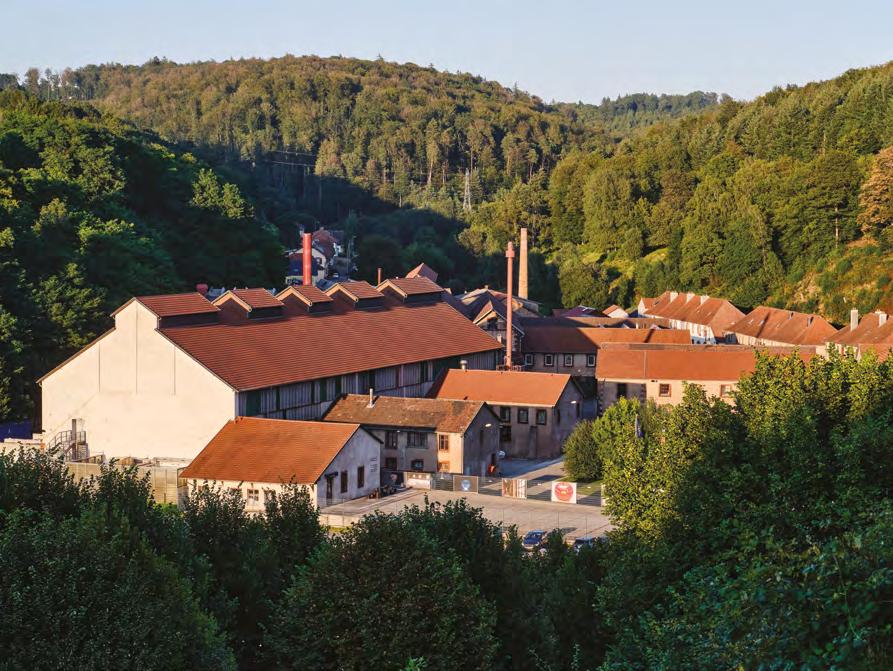
INSPIRATION
When gestures make society
PORTRAIT
Pierre Charpin, Endless Lines
Cadence Collection
PROFESSION
Twisting, Pulling, Coiling, Team leader, the know-how maestro
PARTNERSHIP
The Tale of the Chandelier in a Heart
PORTFOLIO
Marta Gili, “What we see is not the whole of reality”
SKETCH
The manufacture illustrated by Lamia Ziadé
CONTENTS 5 6 — 15
16 — 21
22 — 35 NEWS
36 — 43
44 — 45
46 — 55
56 — 57
SOMMAIRE 6 — 15
16 — 21
des
à
22 — 35
Collection Cadence 36 — 43
le
44 — 45
46 — 55
56 — 57
À la manufacture, pour atteindre l’excellence, le savoir-faire verrier s’exerce à plusieurs et raconte une façon d’être ensemble. Texte : Sixtine Dubly
Photographie : Christopher Sturmann et Jean-Philippe Mesguen
Quand le geste fait société
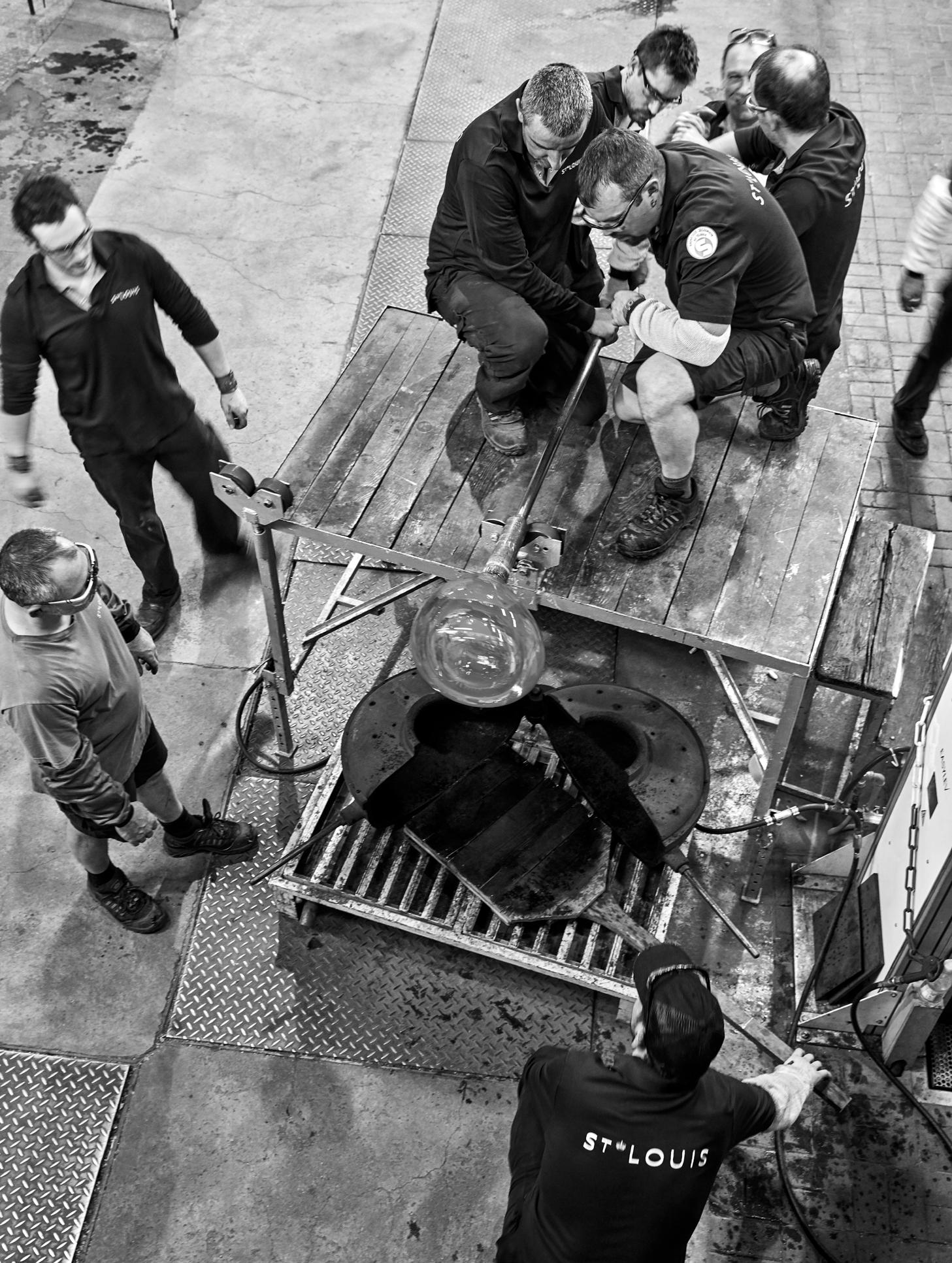
When Gestures Define the Society
At the factory, to achieve excellence in glassmaking, several people work together in concert with a common goal. Text: Sixtine Dubly
Photography: Christopher Sturmann and Jean-Philippe Mesguen
6INSPIRATION
INSPIRATION


9FACETTES # 78INSPIRATION
À Saint-Louis, façonner un simple verre à pied nécessite le savoir-faire de trois verriers agissant de concert. Chacun s’accorde sans cesse au rythme de l’autre, à celui de la matière et à ses différents états de fusion. La pratique collective des gestes verriers est au cœur de l’identité de la manufacture. Ce que l’anthropologue Arnaud Dubois, en visite à Saint-Louis pour Facettes #7, appelle « le savoirfaire distribué ». Cette organisation est spécifique à l’organisation d’une manufacture, elle permet d’atteindre à la fois l’excellence et la productivité. « Ensemble » est bien le modus operandi de la manufacture. « L’anthropologie s’intéresse à des processus techniques de fabrication en ce qu’ils donnent accès à des relations sociales observables uniquement par le prisme de la matière, rappelle l’anthropologue. Cette transformation façonne une vision du monde. Le savoir-faire produit du savoir-être, et le geste fait société*. » À Saint-Louis, l’être et le faire sont habilement mêlés depuis des siècles. Les productions verrières, les gestes, mais aussi l’imaginaire et le mode de vie des verriers évoluent constamment et constituent ce que l’on appelle « l’éthique artisane ». Enserrée par des montagnes boisées, des rivières, des étangs, la manufacture de Saint-Louis, comme de nombreuses entités verrières, est ancrée à l’Est. La région, qui fournit l’eau, le bois, la potasse et la silice, a contribué
par son accès difficile à forger des sociétés verrières singulières et relativement fermées. Autrefois, de jour comme de nuit, la cloche sonnait quand le cristal était prêt ; le village vivait au rythme de la matière, raconte un ancien.
Aujourd’hui encore, s’installer à Saint-Louis-lès-Bitche, comme à Murano, c’est embrasser l’identité artisane.
Arnaud Dubois rappelle qu’un geste de savoir-faire est un écosystème, « une triangulation entre une matière, un outil et un corps dans un territoire donné ». Les jeunes recrues, la vingtaine, qui travaillent à la halle du chaud l’ont bien compris. Tous ne viennent pas du territoire, certains ont même découvert le métier à la télévision. L’un d’eux vient tout juste d’acheter une maison dans le village.
Il y a aussi le club de foot, la pêche, les virées à Metz, les endroits secrets de la forêt et l’ancien lavoir qui rassemble désormais autour d’une bière plutôt qu’un panier de linge.
« On s’installe pour appartenir à un territoire, entrer dans l’histoire verrière, souligne Arnaud Dubois. Ceux qui n’ont pas hérité de ce patrimoine, comme autrefois les dynasties de verriers, peuvent, pourquoi pas, créer une nouvelle lignée. » Cette dynamique d’intégration, nécessaire à la pérennité du métier, crée un sentiment d’appartenance, de fierté et aussi d’égalité. Tous sont unis par un désir d’excellence. Être verrier, avant tout. /…
At Saint-Louis, shaping a simple stemmed glass requires the expertise of three glassmakers acting together. Each is continuously attuned to the rhythm of the others and the different states of the material they are working. This harmony of movements from different glassmakers is at the heart of the factory’s identity. This is what the anthropologist Arnaud Dubois called “distributed expertise” when he visited Saint-Louis for Facettes #7. This organisation is unique to the factory and makes it possible to attain both excellence and productivity. “Together,” is indeed the modus operandi of the factory. “Anthropology studies technical manufacturing processes because they give access to social interactions that are observable only through the prism of matter,” recalls the anthropologist. “This transformation shapes a vision of the world. Expertise begets expertise, and these gestures define society*.” At Saint-Louis, being and doing have been skilfully intertwined for centuries. The glass products, the movements, but also the imagination and way of life of the glassmakers are constantly evolving and constitute what is called “the artisan’s code.”

Enclosed by wooded mountains, rivers and ponds, the Saint-Louis factory — like many glassblowing entities — is anchored in the East. The region, which provides water, wood, potash and silica, has contributed to creating unique and close-knit glassmaking societies, in part due to its inaccessibility. In the past, the bell used to ring,
day or night, when the crystal was thriving, and the village lived to the rhythm of this material, recalls one of the older villagers. Even today, settling into Saint-Louislès-Bitche — just like at Murano — means embracing an artisan’s identity. Arnaud Dubois reminds us that the actual movements of expertise are their own ecosystem, “a triangulation between a material, a tool and a body in a given territory.” The young recruits, about twenty of them, working in the hot workshop understand this very well. Not everyone comes from the region, some have even discovered the line of work from seeing something on T.V. One of them has just bought a house in the village. There is also the football club, fishing, trips to Metz, hidden corners of the forest, and the old wash house which now brings people together around a beer rather than a basket of laundry. “They settle in to belong to the territory, to enter into the history of glassmaking,” explains Arnaud Dubois.
“Those who were not born into this heritage through a dynasty of glassmakers in the past, can create a new line.” This dynamic of integration, necessary for the sustainability of the profession, creates a feeling of belonging, of pride and also of equality. All are united by a desire for excellence. To be a glassmaker, above all.
11INSPIRATION
* Marcel Mauss, Techniques, technologie et civilisation PUF, collection
“Quadrige” (published and presented by Nathan Schlanger), 2012.
10FACETTES # 7
* Voir Marcel Mauss, Techniques, technologie et civilisation PUF, collection « Quadrige » ( édition et présentation de Nathan Schlanger ), 2012.
INSPIRATION


13INSPIRATION
INSPIRATION
L’éthique artisane repose notamment sur la rencontre avec la matière. Les mots empruntent ici au langage de l’amour, entre passion et impuissance. Les verriers le savent, ils ne maîtriseront jamais le cristal. Ce fluide aux états changeants diffère d’heure en heure et interroge encore les meilleurs ingénieurs. L’artisanat verrier échappe à la technique pure, aux seuls outils. Il faut aussi convoquer la magie, ce fameux sel de la vie. Cette complexité est au centre de la transmission. Corps à corps silencieux dans le souffle bruyant du four ou dans le bruit des meules qui taillent le cristal. Si les gestes échappent au dicible, les outils sont aisément répertoriés. Ils n’ont pas changé depuis la naissance du verre. Ciseaux, pinces, mailloches, palettes, cales, cannes, l’artisan au chaud en manie une dizaine. L’outillage « fait » à la taille et à l’anatomie du verrier lui est réservé et déposé dans un bac à son nom. Il faut dix ans pour maîtriser l’art d’être verrier. Cette temporalité nécessite de former constamment aux nombreux savoir-faire. La vie à la manufacture s’organise autour de la transmission et des interactions entre les classes d’âges et les techniques.
Cette dimension vivante de l’artisanat est au centre de la candidature des gestes des métiers d’art verriers au patrimoine culturel immatériel de l'Unesco une candidature portée par six pays de l’Union européenne, dont la France, alors que 2022 a été déclarée Année internationale du verre.
Le dossier, tout juste déposé, est adossé à l’inscription, depuis 2019, des gestes des savoir-faire verriers à l’inventaire du patrimoine culturel immatériel de la France tenu par le ministère de la Culture. Ce dossier place l’outil, le geste et surtout l’existence de communautés actives au cœur de son appréciation. « Les savoir-faire sont en ce sens un mille-feuille cumulatif, la tradition n’est pas seulement une répétition, mais aussi une création », insiste l’anthropologue. Ce calendrier fait, par ailleurs, écho à la fascination que suscitent le cristal et l’identité verrière bien au-delà des montages des Vosges. Amateurs, collectionneurs, designers, artistes, étudiants des écoles d’art et, cette année, jeunes photographes de l’ENSP d’Arles viennent de France, d’Asie ou d’Amérique admirer la matière en fusion qui passe de verrier en verrier. Ressentir les vibrations du cristal. Transporter hors les murs de la manufacture ce savoir-faire qui invente aussi une façon moderne d’être ensemble.
Arnaud Dubois est anthropologue, chercheur au Conservatoire national des arts et métiers, et professeur à l’École nationale supérieure d’art de Limoges. Spécialiste de l’anthropologie des techniques, il travaille sur les relations entre art, artisanat et industrie, avec un intérêt particulier pour les techniques de
coloration. Il est l’auteur des Meilleurs ouvriers de France ( Skira, 2017 ) et de La Vie chromatique des objets ( Brepols, 2019 ). Il a, par ailleurs, codirigé Arcs-en-ciel et couleurs ( Cnrs Éditions, 2018 ) et Gestes et savoir-faire (dé)possédés ( PUF, collection « Éthnologie française », 2022-1, 2022 ).
The artisan’s code is based in particular on interactions with the material itself. The only words we can use here are from the language of love: from passion to powerlessness. Glassmakers know that they will never have full control over the crystal. This material passes through different states, changing from one hour to the next, and still challenging even the best engineers. Glass craftsmanship is about more than just pure technique or tools. It is also necessary to conjure some magic, this infamous salt of life. This complexity is at the heart of the communication. Bodies moving in silence with the noisy breath of the furnace or the noise of the millstones that cut the crystal. If the bodies move without words, the tools speak for themselves. They have not changed since the birth of glassmaking. Scissors, pliers, mallets, pallets, wedges, canes: the hot workshop uses at least a dozen.
The tools are uniquely made to fit the bodies of the specific glassmakers and are kept in separate bins marked with their names. It takes ten years to master the art glassmaking. This requires constant training in numerous skills.

Life at the factory is organised around transmission and interaction between ages and techniques.
This animated dimension of craftsmanship is at the centre of an application, supported by six European countries including France, for the heritage of glassmaking gestures to be recognised by UNESCO as part of 2022 being
declared the International Year of Glass. The file, just submitted, is backed by the inclusion — since 2019 — of glassmaking gestures as part of the inventory of intangible cultural heritage of France, as defined by the Ministry of Culture. The tools, gestures and above all else the existence of active communities are placed at the heart of assessment. “The expertise is, in this sense, a cumulative layering, tradition is not just repetition, but also creation,” explains the anthropologist. This concept also echoes the fascination aroused by crystal and glass well beyond the Vosges mountains. Amateurs, collectors, designers, artists, art school students and — this year — young photographers from the ENSP of Arles come from France, Asia or America to admire the molten material that passes from glassmaker to glassmaker: to feel again the crystal ’s reverberations. Once taken beyond the walls of the factory, this expertise also invents a modern way of coming together.
Arnaud Dubois is an anthropologist and researcher at the National Conservatory of Arts and Crafts, and professor at the National School of Art in Limoges. A specialist in the anthropology of techniques, he works on the relationship between art, craftsmanship and industry, with a particular interest
in colouring techniques. He is the author of Meilleurs ouvriers de France (Skira, 2017) and La Vie chromatique des objets (Brepols, 2019).
He also co-edited Arcs-en-ciel et couleurs (Cnrs Éditions, 2018) and Gestes et expertise (dé)possédés (PUF, collection "Ethnologie française," 2022-1, 2022).
15INSPIRATION
14FACETTES # 7
Le célèbre designer français signe, en 2022, la collection Cadence une vingtaine de pièces, des arts de la table aux luminaires qui scande une poétique du cristal au quotidien. Texte : Sixtine Dubly / Portrait : Jean-Philippe Mesguen / Illustrations : Pierre Charpin

Pierre Charpin, des lignes à l’infini
Pierre Charpin, Endless Lines
French designer Pierre Charpin composed a new contemporary lifestyle collection: from tableware to lighting, through barware and decoration, the objects are designed for everyday use. Text: Sixtine Dubly Photography: Jean-Philippe Mesguen / Illustrations: Pierre Charpin
16
PORTRAIT
PORTRAIT
Saint-Louis Votre travail s’appuie sur la pratique sérielle du dessin, comment procédez-vous ?
Pierre Charpin Je dessine beaucoup, toujours à la main, et je jette énormément ! C’est par ce processus que je découvre le principe plastique de chacun de mes projets. J’aime trouver une idée et tourner autour, travailler par séries, que ce soit pour les pièces destinées à la galerie Kreo ou pour des « dessins de dessins », hors de tous projets. Créer une collection, avec plusieurs pièces, relève de la série.
Pour Saint-Louis, j’ai trouvé ce principe, très simple finalement, de lignes horizontales qui rencontrent des lignes verticales. Cette géométrie fonctionne sur des typologies aussi éloignées que celles des arts de la table et des luminaires. Elle crée le lien, une ligne, et permet à ces objets de fonctionner ensemble ou séparément et de s’inscrire dans un paysage quotidien.
De quelle façon avez-vous abordé la taille ?
Les lignes de Saint Louis sont exigeantes, elles nécessitent une parfaite maîtrise de la taille. Si la ligne dévie un tout petit peu, les verticales ne pourront pas rencontrer les horizontales. C’est assez radical, comme le cristal, comme la taille. Cette géométrie du tailleur évoque aussi la rencontre. J’aime cette idée de matérialiser mes rencontres amicales par des lignes qui se croisent et se suivent un temps puis continuent leur chemin. Une ligne est, par nature, infinie, sans fin, sans début. Mon design en capture souvent un fragment. Je dois dire que les lignes occupent beaucoup de mon temps et de mes dessins.
Comme Saint-Louis, vous êtes reconnu pour l’usage de la couleur, or Cadence est transparente.
La couleur est d’abord la lumière du cristal, sa transparence, que j’ai essayé de retenir par un dessin de taille, par le papier, qui tous deux font écran. Tenter d’arrêter la diffraction, la puissance du cristal, crée une tension, une poésie.
What was your approach to crystal as a material and to the factory, which you were already familiar with from your first collaboration with Saint-Louis in 2010, for the Night Watchmen collection?
Quelle a été votre approche de la matière cristal et de la manufacture, que vous connaissiez déjà puisque votre première collaboration avec Saint-Louis date de 2010, pour la collection Veilleurs de nuit ?
Pour moi, les idées priment généralement sur la matière.
Le cristal Saint-Louis est, et demeure, l'exception à cette règle. Il était impossible d'ignorer le cristal et l'existence de la manufacture, dont j'ai évidemment tenu compte. Les manufactures, les ateliers sont toujours des lieux d'émotion. Lorsque j'ai commencé à dessiner Cadence, j'avais en tête les gestes des artisans. Les lignes de Cadence, qui se croisent et se répètent, sont un hommage à la virtuosité du travail de taille. En dessinant, je pensais au paysage local façonné par l'activité cristallière, à la vie du village de Saint-Louis-lès-Bitche et à son patrimoine vivant. Il y a une certaine rigueur inhérente, voire une ferveur, attachée au savoir-faire historique de la manufacture.
C’était pour moi très concret, j’avais un sentiment agréable d’utilité en créant des pièces qui disent quelque chose de l’identité de Saint-Louis.
Comment avez-vous envisagé les formes ?
La manufacture a développé, par sa longue histoire, un vaste langage de formes dans lequel il faut trouver sa voix. Après de très nombreux croquis, des allers et retours avec mes assistants qui traduisent mes dessins en 3D, j’ai enfin osé raccourcir les pieds des verres qui sont historiquement hauts chez Saint-Louis et, à mon sens, trop délicats pour un usage quotidien. Les abat-jour sont nés de cette même envie d’intégrer le cristal à la vie de tous les jours. Je voulais une belle lumière, diffuse et douce, d’où cette idée de jouer avec l’abat-jour et de faire dialoguer le cristal translucide et le papier opaque.
Vous parliez tout à l’heure de « paysage », que vouliez-vous dire ? J’aime penser les objets comme des éléments qui composent notre paysage quotidien et j'aime l'idée qu'ils interagissent avec leur environnement. Je vis avec eux de cette façon, et c’est certainement pour cela que je leur donne un sens qui distingue clairement la face et le profil, le devant et l'arrière. C'est très lisible pour les vases du Cirva ou de la Manufacture de Sèvres que j'ai ici sur les étagères. D’ailleurs, je n’y mets pas de fleurs, ce sont d’abord des aplats de formes et de couleurs, j’aime cette simplicité frontale. … /…
For me, ideas generally take precedence over material. Saint-Louis crystal is, and remains, the exception to this rule. It was impossible to ignore the crystal and the existence of the factory, which I obviously took into account. Factories and workshops are always places with emotion. When started to draw Cadence, was imagining the gestures of the craftsmen. The lines of Cadence, intersecting and repeating themselves, are a tribute to the virtuosity of the crystal cutting. Whilst drawing, I thought of the local landscape shaped by the work with crystal, of the life and the village of Saint-Louis-lès-Bitche and its living heritage. There is a certain inherent rigour, even a fervour, attached to the factory’s historical fund of knowledge. It was very concrete for me, and had a pleasant feeling of usefulness by creating pieces that say something about the Saint-Louis identity.
How did you approach the crystal cutting?
Saint-Louis Your work is based on the serial practice of drawing, how do you proceed from there?

Pierre Charpin I draw a lot, always by hand, and I throw away a lot! It is through this process that I discover the malleable principle of each of my projects. I like to find an idea and then expand upon it, work in series, whether for pieces intended for the Kreo gallery or just when drawing for drawing’s sake, not for any particular project. Creating a collection, with several pieces, arises from a series. For Saint-Louis, found this very simple principle of horizontal lines meeting vertical lines. This geometry works on objects as diverse as tableware and lighting. It creates the link, a line, and allows these objects to function — together or separately — and to fit into a daily landscape.
The lines of Saint-Louis are demanding, they require perfect mastery of etching as a craft. If a line is just a little bit off, the verticals won’t be able to intersect with the horizontals. It’s quite radical: as with the crystal, so it is with the the cut. This geometry of the etchings also evokes a meeting. like this idea of materialising meetings with my friends in lines that cross and follow each other for a while and then continue on their way. A line is, by nature, infinite without end and without beginning. My design often captures a fragment of it. I must say that lines occupy a lot of my time and my drawings.
of the glasses which are historically tall at Saint-Louis, and too delicate for everyday use, in my opinion.
The lampshades were born from the same desire to integrate the crystal into everyday life. I wanted a beautiful light, diffuse and soft, hence this idea of playing with the lampshade and creating a dialogue between translucent crystal and opaque paper.
You were talking about the landscape earlier, what did you mean?
I like to think of objects as elements that make up our daily landscape by the way they interact with their environment. I live with them that way and certainly that’s why I give them an orientation that clearly distinguishes the face and the profile, the front and the back. It’s easy to see from the vases that I have here on the shelves, from CIRVA or from the Sèvres factory.
How did you envision the shapes?
The factory has developed, through its long history, a vast language of shapes in which you have to find your own voice. After many sketches, back and forth with my assistants who translate my drawings into 3D, I finally dared to shorten the stems
Like Saint-Louis, you are recognised for your use of colour, but Cadence is transparent.
Colour is first and foremost the light of the crystal, the transparency, which I tried to retain with etched marks and paper, both of which act as a screen. Trying to stop the diffraction, the power of the crystal creates a tension, a poetry.
By the way, I don’t use them for flowers, for me they are all about flat areas of shape and colour.
I like this frontal simplicity.
18PORTRAIT FACETTES # 7 19
PORTRAIT
Cette réflexion sur l’interaction est d’ailleurs le fondement de la pensée que vous avez développée, en Italie puis au Japon, au contact du mouvement Memphis. Pouvez-vous revenir sur cet axiome fondateur ? J’ai découvert le mouvement Memphis* et le design radical italien dans la revue Domus, à l’école des beaux-arts de Bourges. À l'époque, en France, le design était surtout industriel il n'y en avait pas tellement d'autres formes.
En même temps, nous vivions l’arrivée de la figuration libre, et, à l'école des beaux-arts, nous nous étions tous mis à peindre. Mais cela ne me correspondait pas vraiment, je passais donc des heures à la bibliothèque. Découvrir ce mouvement faisait le même effet que d'écouter de la musique punk, ça dégageait une énergie folle, sans le souci de faire joli ou d'être élégant. Memphis, mais plus particulièrement Ettore Sottsass, a créé un nouveau langage plastique dont la grammaire est très simple : poser une forme sur une autre et sur
une autre Je suis allé à Milan, une ville de taille moyenne par rapport a Paris, où j’ai pu rencontrer facilement les designers dont j'aimais le travail et d'autres qui allaient devenir des amis. J'ai fréquenté les fêtes « sottsassiennes » et « mendiniennes ». Milan vivait au rythme de ces maestros. J’ai eu la chance de présenter ma première collection à Milan, à la galerie Post Design, à l'invitation d'Ettore Sottsass. En parallèle, l’art minimal de Donald Judd ou celui de Carl Andre ont été fondateurs, et j'y trouve encore aujourd'hui autant de puissance, de radicalité qu'à l'époque. Ces façons de penser les formes dans l’espace m’ont permis d’aller vers un autre design, entre les mondes de l’art et de l’industrie.
Quel a été le rôle du Japon ?
Plus tard, en 2012, j’ai eu la chance d’être lauréat de la villa Kujoyama, à Kyoto. Là-bas, j’ai été frappé par le rapport des Japonais à l'objet et par leur intérêt pour le vide entre
les objets. Et cela que ce soit dans la vitrine d’une maison du centre de Kyoto ou dans l’entrée d’une grange, dans un village des collines.
Au Japon, j’ai eu le sentiment étrange que chaque objet avait été posé là dans l’intention de créer un paysage, il y a un art du placement. J'ai eu le sentiment que la mise en espace comptait tout autant que le design lui-même. Plus largement, ces deux pays, l’Italie et le Japon, ont été des ailleurs nécessaires que me suis fabriqués et qui m’habitent toujours. Mais, en réalité, mon imaginaire a besoin d’un lieu pour s’épanouir, un lieu pour concrétiser mes idées, et ce lieu, c'est l'espace de mon atelier qui se trouve à Ivry, ville où j'ai grandi. Au fond, j'y reviens toujours.
*Memphis est un groupe fondé par Ettore Sottsass en 1980 à Milan. Son nom vient de la chanson de Bob Dylan Stuck Inside of Mobile With The Memphis Blues Again
Son approche radicale a révolutionné le design,
il a compté parmi ses membres Michele De Lucchi, Andrea Branzi, Shiro Kuramata.
Alessandro Mendini, architecte et designer, a été le rédacteur en chef de la revue Domus de 1979 à 1985.
This reflection on interaction is also the foundation of your reflection as a designer, influenced by the Memphis movement in Italy and then in Japan. Can you come back to this founding pillar?
I discovered the Memphis* movement and radical Italian design through the Magazine Domus when I was at the School of Fine Arts in Bourges. At that time, design in France was mainly industrial, and there were scarcely any other options. At the same time we were experiencing the arrival of free figuration and we all started painting at the school of fine arts. But that didn t really suit me so I spent hours in the library. Discovering this movement had the same effect as listening to punk music, it gave off a crazy energy without worrying about being pretty or elegant. Memphis and more specifically Sottsass — had created a new plastic language with a very simple grammar, placing one form onto another onto another…

I went to Milan, a medium-sized city compared to Paris, where I could easily meet designers, whether those whose work liked, or those who were to become friends. I went to “Sottsassian” and “Mendinian” parties. Milan lived in the rhythm of these masters. had the chance to present my first exhibition in Milan at the Post Design gallery, invited by Ettore Sottsass. In parallel, the minimalist art of Donald Judd and Carl Andre was founded, and even today I still find their art just as powerful and radical as I did back then. These ways of thinking about forms in space allowed me to move towards another design style between the worlds of art and industry.
How did Japan play a role?
Later in 2012, I was lucky enough to be the winner of the Villa Kujoyama in Kyoto. In Japan, I was struck by their relationship to the object and by their interest in the void between objects.
Whether in the window of a house in central Kyoto or the entrance of a barn in a hillside village. In Japan, I had the strange feeling that each object had been placed there with the intention of creating a landscape: there is an art of placement. The layout counted just as much as the design itself. More broadly, these two countries — Italy and Japan — were necessary in my formation and both still live with me. But in reality, my imagination needs a place to flourish, a place to solidify my ideas, and this place is within the walls of my studio in Ivry, the city I grew up in. At the end of the day, I always come back to it.
*Memphis is a group founded by Ettore Sottsass in 1980 in Milan, whose name is inspired by the Bob Dylan song Stuck Inside of Mobile with the Memphis Blues Again. Its radical approach revolutionised
design. Members included Michele De Lucchi, Andrea Branzi, Shiro Kuramata.
Architect and designer Alessandro Mendini was the editor-in-chief of Domus magazine from 1979-1985.
20PORTRAIT
PORTRAIT
Élégante Cadence tout en lignes fines et jeux de transparence. Latitudes et longitudes des lignes, gravées dans le cristal, dessinent une collection rythmée qui fait le tour du verre, comme un tour de la Terre. Texte : Sixtine Dubly

Photographie : Maxime Tétard
Collection Cadence
Cadence Collection
Based on the interplay of horizontal and vertical lines, Pierre Charpin’s drawings give rhythm to material, enhancing its brilliance and clarity. Text: Sixtine Dubly
Photography: Maxime Tétard
22NEWS
ACTUALITÉ
Previous page: Round decanter, large and medium cylindrical tumblers.

Opposite: Wine carafe, wine glass #3, water glass #2, and champagne flute.
Above Small and large vases, small pendant light with paper lampshade.
Page précédente : Flacon rond, gobelets cylindriques moyen et grand modèles.
Ci-contre : Carafe à vin, verre à vin n°3, verre à eau n°2 et flûte à champagne.
Ci-dessus : Vases petit et grand modèles, petite suspention avec abat-jour papier.

25NEWS
Round decanter, box, small and large vases, photophore, water glasse #2, highball, medium cylindrical tumbler, wine carafe, large bowl.
Flacon rond, boîte, vases petit et grand modèles, photophore, verre à eau n°2, chope, gobelet cylindrique moyen modèle, carafe à vin, coupe grand modèle.


FACETTES # 7 2726NEWS
Above: Candlestick and photophore.
Opposite: Box, highball, champagne flute, medium cylindrical tumbler.
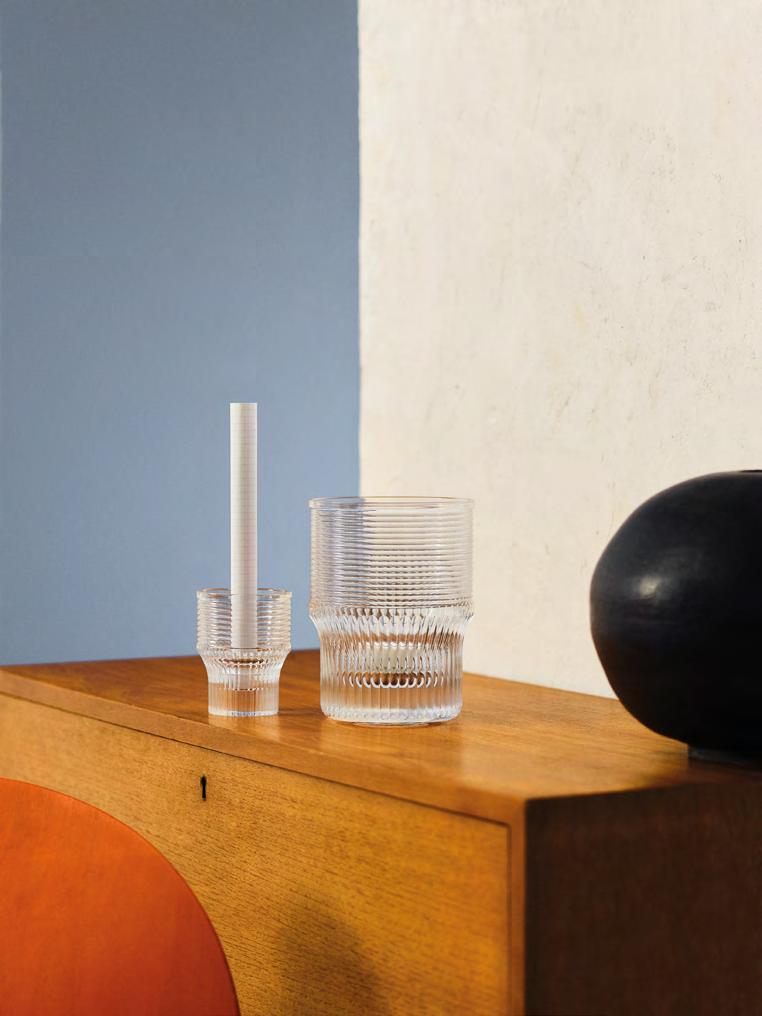
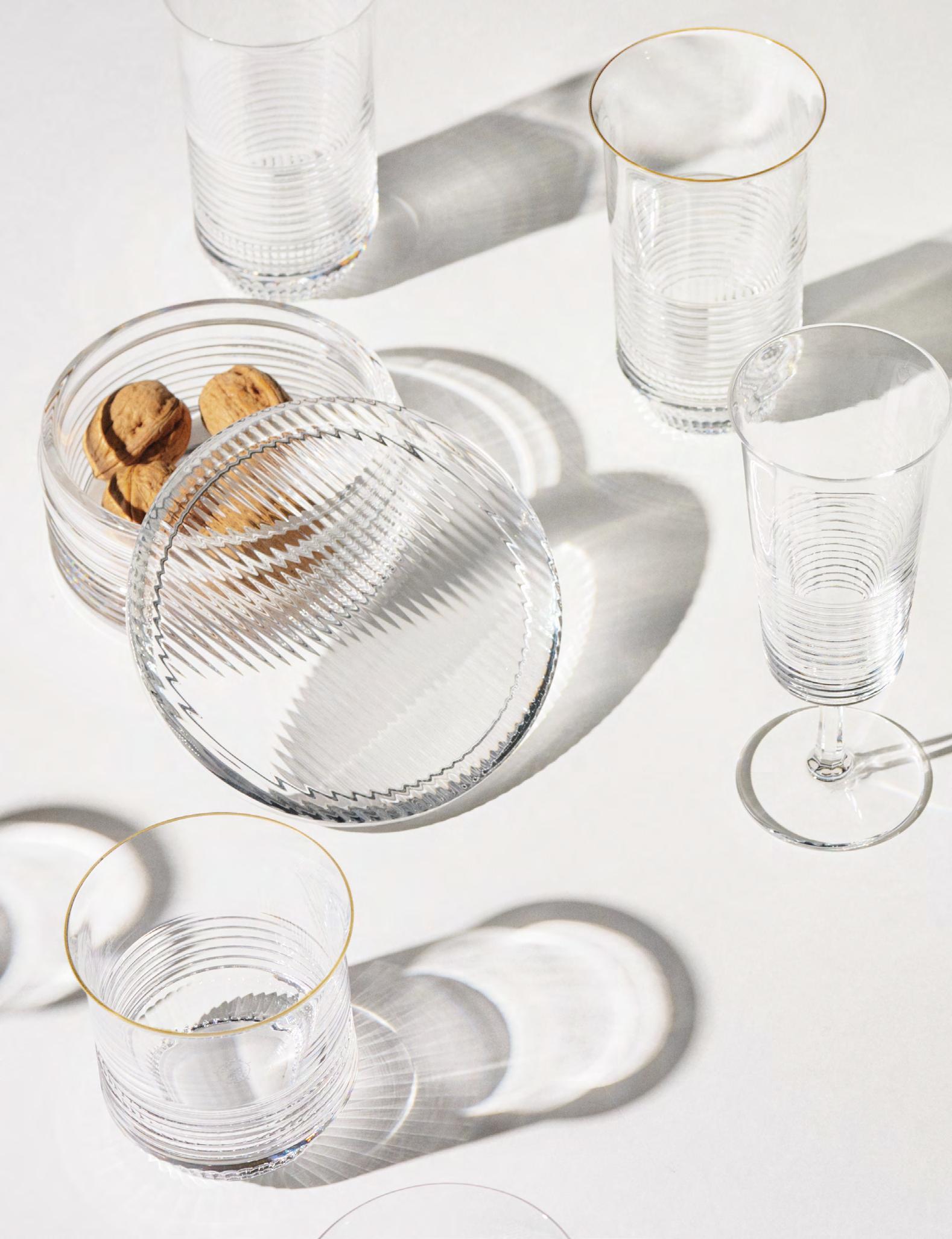
Ci-dessus : Bougeoir et photophore.
Ci-contre : Boîte, chope, flûte à champagne, gobelet cylindrique moyen modèle.
NEWS
28
Opposite Medium and large bowls. Above Tableware, gold rim. Ci-contre : Coupes moyen et grand modèles. Ci-dessus : Art de la table, filet or.


NEWS 31
Small table lamps with crystal and paper lampshade. Tall table lamp with crystal lampshade, small pendant light with crystal lampshade, large pendant light with paper lampshade.

Lampes à poser petit modèle avec abat-jour cristal et avec abat-jour papier, lampe à poser haute avec abat-jour cristal, suspension petit modèle avec abat-jour cristal, suspension modèle large avec abat-jour papier.
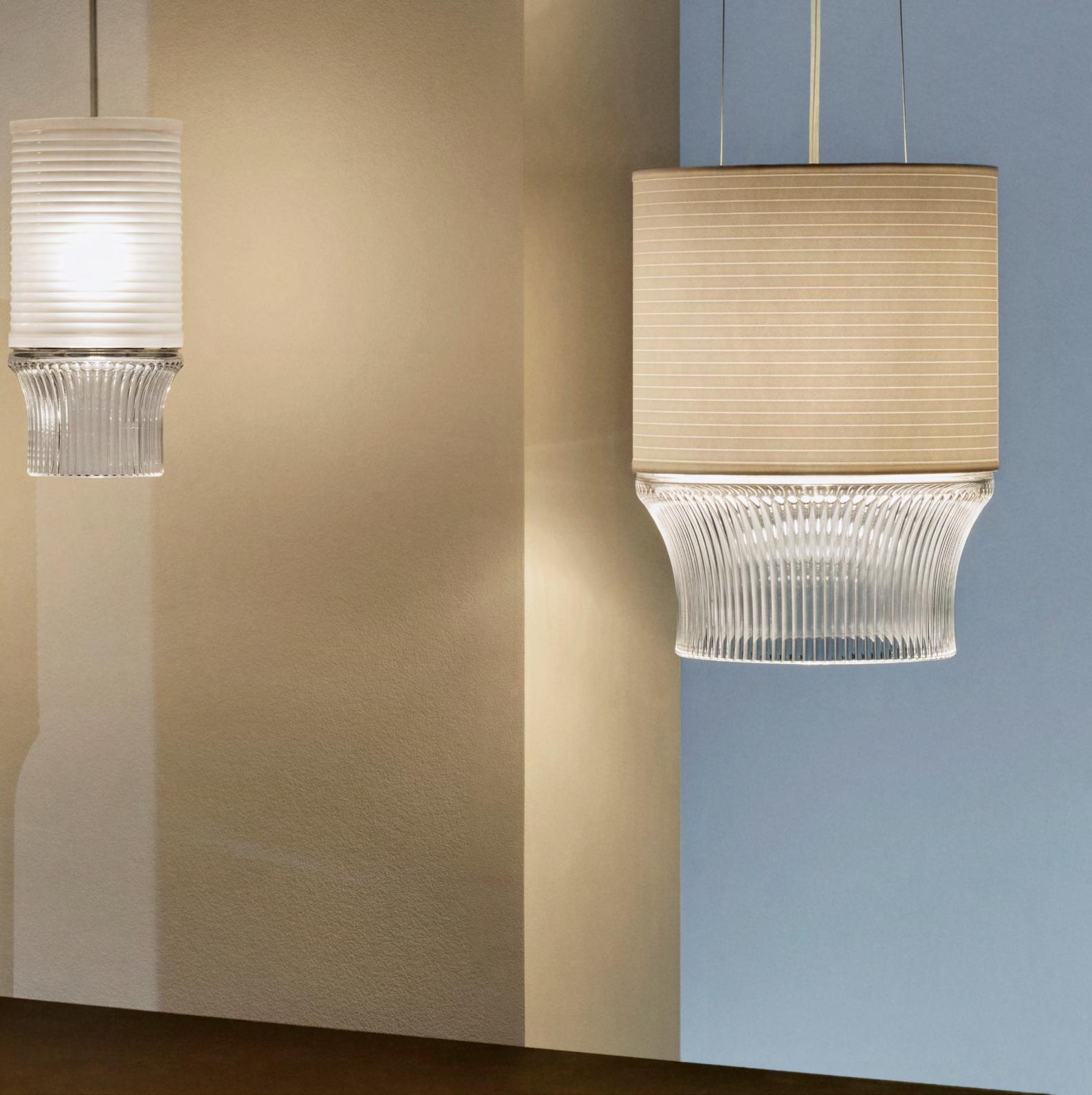
FACETTES # 7 3332NEWS
Opposite Large table lamp with crystal lampshade, medium cylindrical tumbler. Above: Tall table lamp and paper lampshade, small table lamp and crystal lampshade, medium bowl.
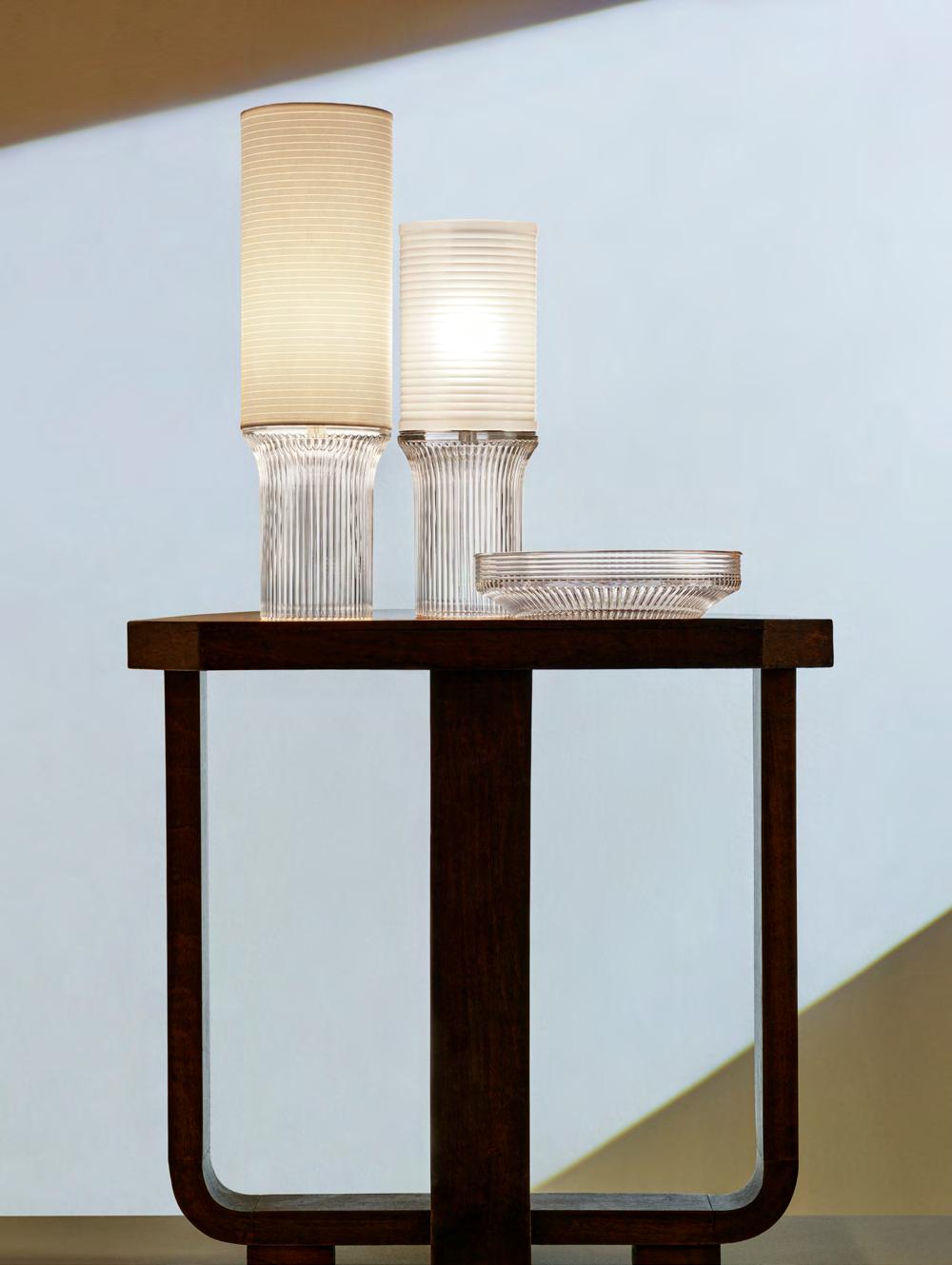
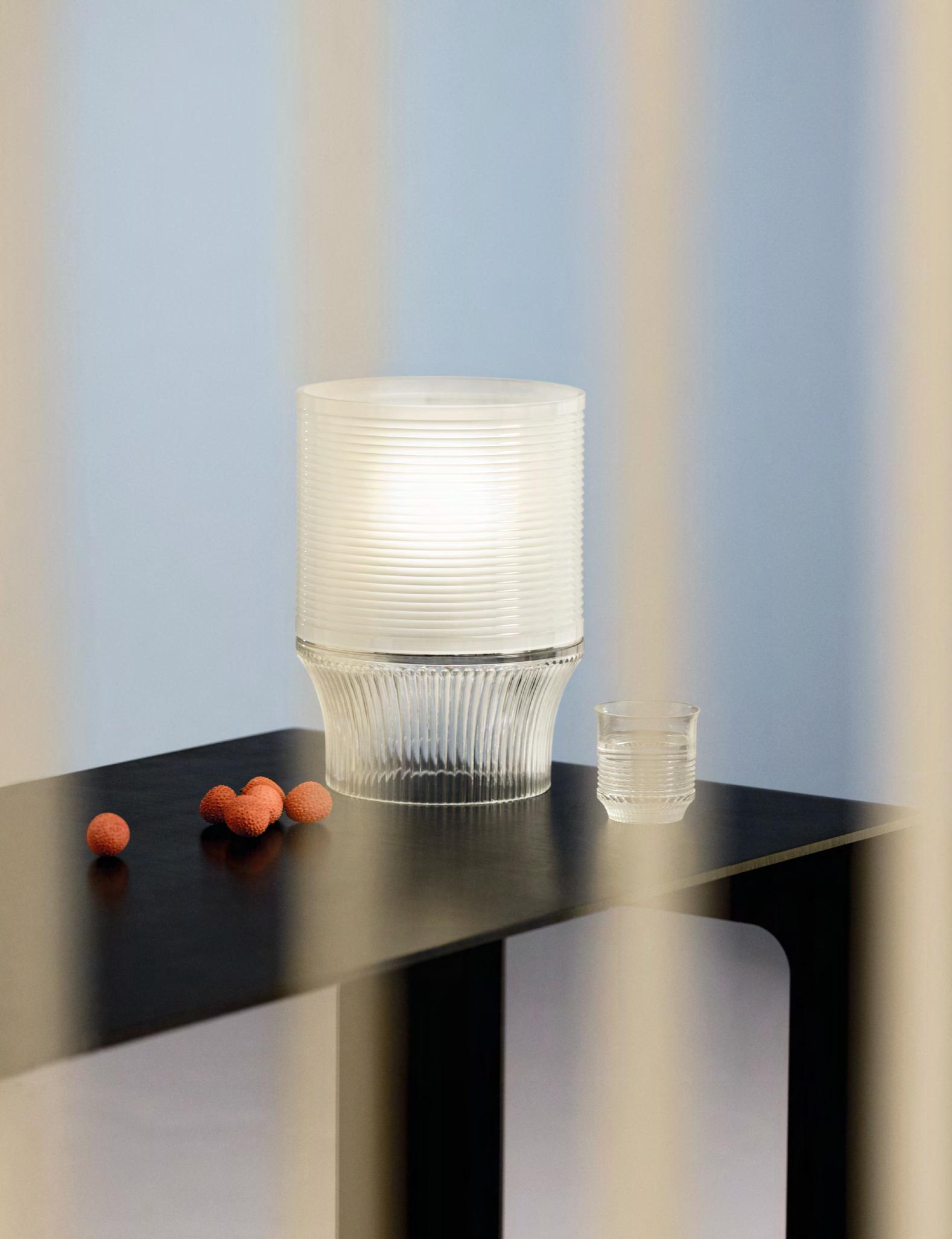
Ci-contre : Lampe à poser large avec abat-jour cristal, gobelet cylindrique moyen modèle.
Ci-dessus : Lampe à poser haute avec abat-jour papier, lampe à poser petit modèle avec abat-jour cristal, coupe grand modèle.
35NEWS
Au chaud, le chef de place orchestre la transmission des gestes verriers au quotidien. Texte : Sixtine Dubly / Photographie : Jean-Philippe Mesguen
Torsader, étirer, vriller, le chef de place, garant des savoir-faire
Twisting, Pulling, Coiling, Team leader, the know-how maestro
In the heat, the head of the factory orchestrates the day-to-day harmony of the glassmakers’ gestures. Text: Sixtine Dubly / Photography: Jean-Philippe Mesguen

36PROFESSION
MÉTIER
Une pince de bois plate et des papiers dont s’échappent des fumerolles suffisent à créer une jambe élancée. Ils ont l’œil, le savoir-faire, l’expérience. Ils prendront le temps, à la pause, de refaire un geste, de donner une brève indication, d’encourager un jeune verrier à persévérer dans cet apprentissage au long cours. Ce sont les chefs de place, qui distribuent et supervisent les gestes des verriers dans la grande halle du chaud, autour du four et du cristal en fusion. À chacun son objet, sa cadence et son trajet dans la halle. Souvent comparée à une ruche, l’activité des verriers évoque l’organisation millimétrée des abeilles.
Du parcours des visites, qui permet au public de regarder la halle d’une passerelle, l’observation des gestes est plus facile, et les différentes équipes se détachent peu à peu.
Il y a celle de la carafe et celle du verre, celle de la branche de lustre et celle de la lampe baladeuse.
Les équipes sont constituées de deux à cinq verriers selon l’amplitude de la pièce. Tous tournent autour d’un chef de place facilement reconnaissable il est le seul à être assis. Depuis cette position, qui marque son expérience, il façonne, orchestre, transmet.
Le chef de place s'occupe souvent de la partie la plus délicate de l’objet l’étirage de jambe, la réalisation du pied. Il donne le rythme aux membres de l’équipe qui ne le quittent pas du regard afin de savoir à quel moment précis transmettre le cristal d’une canne à l’autre. Jeunes recrues, verriers confirmés, femmes et hommes, tous sont « placés » chaque jour par l’animateur de places qui compose les équipes en fonction de l’objet à façonner et de l’apprentissage à acquérir. Ils sont une vingtaine d’animateurs, sur une centaine de verriers, à former au quotidien les verriers. … /…
A flat wooden claw and papers from which puffs of smoke escape are enough to create a slender leg. They have the eye, the know-how, the experience. They will take time, in a pause, to repeat a movement, to give brief directions, to encourage a young glassmaker to persevere in their long apprenticeship. It is the managers who distribute and supervise the glassmakers’ gestures in the large hot workshop, around the oven and the molten crystal. To each their own object, their own pace and their own journey in the workshop. Often compared to a beehive, the glassmakers’ activities evoke the precise organisation of bees. From the visitor’s path which allows the public to view the workshop from a footbridge, the different teams gradually stand out when their gestures and movements are observed more closely. There is that of the carafe and that of the glass, that of a chandelier s stem, and that of the table lamp.

The teams are made up of two to five glassmakers, depending on the size of the piece. All revolve around the head, or manager, easily recognisable for they are the only seated person. From this position, which reflects their experience, they shape, orchestrate and dictate.
The manager is often responsible for producing the most delicate part of each object — drawing out the leg, or creating the foot. They set the rhythm of the team, each member watching them to see the exact moment when the crystal should be passed from one rod to the next.
Young recruits, experienced glassmakers, women and men — all are “placed” into the day’s teams by the team manager, according to the object to be shaped and learning to be acquired. Out of 100 glassmakers, 20 are facilitators who train the craftsmen on a daily basis.

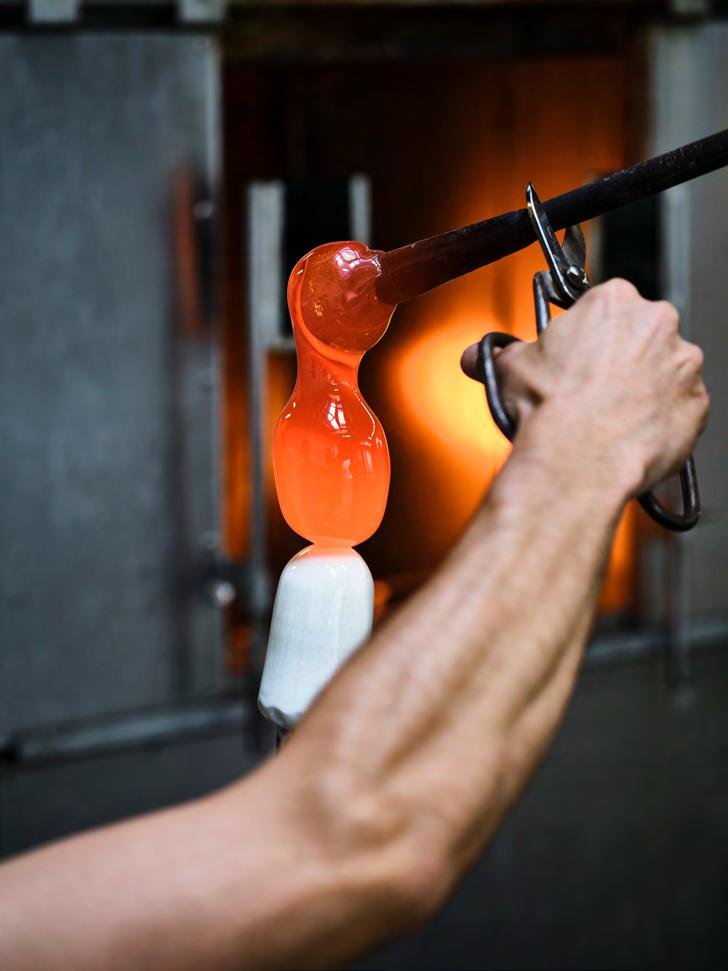

39PROFESSION
Shaping a Folia portable lamp.
Visual check of the regularity of the crystal
Reheating a shaped chandelier’s cup in one of the furnaces of the hot workshop.
Double-layered crystal technique: a layer of coloured crystal overlapped by a layer clear crystal two layers of crystal.
38
MÉTIER
Coupe de lustre dans un four de réchauffe.
Façonnage d’une baladeuse Folia
Superposition de deux couches de cristal l’une sur l’autre, technique dite de doublé.
Contrôle visuel de la régularité du cristal.
Ce savoir-faire verrier est rarement transmis par écrit.
Après l’obtention du certificat d’aptitude professionnelle ( CAP ), le verrier continue sa formation en pratiquant son métier au sein de la manufacture. Les gestes ses sont engrammés au fil des siècles dans un répertoire de signes de la main et de la tête. Ce langage du cristal est presque imperceptible. Cette communication minimale, efficace, est née de la rapidité qu’implique le travail de la matière en fusion et du tumulte de la halle. Il souligne cette tradition verrière où les écrits sont rares et la parole, sobre.

Récemment la manufacture a entrepris, avec l’aide des chefs de place, de cartographier ses savoir-faire à l’écrit. De mettre en mots ce patrimoine gestuel, immatériel.
L’enjeu est de taille alors que, ces dernières années, Saint-Louis accueille de plus en plus de jeunes diplômés et de professionnels en reconversion qui souhaitent embrasser le métier de verrier. Faire entrer l’écrit dans un savoir-faire du corps et du signe n’est pas chose aisée.
Une centaine de gestes dépliés en mots créent ainsi une liste qui permet une nouvelle approche. L’écrit souligne la singularité et la multiplicité des gestes d’exception qui sont pratiqués au quotidien à la manufacture. … /…
This glassmaking expertise is rarely passed on in written form. After obtaining their CAP (Certificate of Professional Aptitude), the glassmaker continues training by practising within the factory. Their gestures have been recorded over the centuries in a repertoire of hand and head signals. This crystal language is almost imperceptible. Minimal and effective, it was born of the speed required when working with molten material and the commotion of the workshop. It underlines the silent nature of communication within glassmaking, where writings are sparse and speech minimal.


Recently, the factory mapped out a written manual, helped by local managers to articulate this gestural, intangible heritage. It is more important than ever to rise to the challenge of transferring these signs and gestures into writing as Saint-Louis has welcomed more and more young graduates and professionals wishing to turn to glassmaking as a profession. It has been no easy feat to translate the expertise of body and gesture into writing. One-hundred gestures unfolded into words, thus creating a list that allows a new approach to learning. The writing underlines the singularity and multiplicity of the exceptional gestures that are in daily use at the factory.

41PROFESSION
Head of place during the production of a stemmed glass
Creation of a chandelier branch by two glassworkers: one stretches while the other blows in order to create a hollow branch.
Shaping a glass leg.
40MÉTIER
Chef de place à la réalisation d’un verre à pied.
Réalisation d’une branche de lustre à deux verriers : l’un étire, l’autre souffle afin que la branche soit creuse.
Façonnage d’une jambe de verre.
À Saint-Louis, la main est indispensable, car la machine ne peut atteindre la virtuosité des verriers. C’est la branche d’un lustre qui, soufflée et torsadée à deux verriers, demeure creuse et ainsi peut être électrifiée, ou le geste solitaire et délicat de l’évasement à chaud d’une verrine de lustre. Tous ces gestes finement observés au fil des années par les chefs de place se déploient désormais, aussi, dans la poésie du verbe : torsader, étirer, vriller…
At Saint-Louis, hand-work is crucial, because no machine can match the glassmakers virtuosity. It is the branch of a chandelier which is blown and twisted by two glassmakers yet remains hollow in order to be electrified, or the solitary and delicate gesture of flaring a chandelier verrine over heat. All these gestures — finely observed over the years by the team leaders — are now also etched in the poetry of verbs: twisting, stretching, coiling…


42
A hand sign between glassmaking partners communicates when to move to the next step.
Quality check of the shape by the head of place.
Le signe de la main indique au verrier partenaire le passage à l'étape suivante.
Le chef de place contrôle la perfection d’une forme.
MÉTIER
L’oiseau emporte un lustre dans le vent des Vosges, par-delà les montagnes et les mers, vers les villes françaises et les pays lointains où sont attendues les créations de Saint-Louis. Ce timbre raconte le patrimoine de la manufacture les lustres imaginés depuis 1850 , mais aussi sa contemporanéité à travers les collections de luminaires dessinées par les designers et qui ont pris leur envol ces dix dernières années.
Une fois par an seulement, une grande maison du luxe français inscrit son histoire sur un timbre de la Poste, spécialement édité à l’occasion de la Saint-Valentin. La planche argentée de Saint-Louis a été tirée à quatre millions d’exemplaires. Elle célèbre, pour les amateurs de cristal comme pour les philatélistes, une année au cœur battant, les Nations unies ayant proclamé 2022 Année internationale du verre.

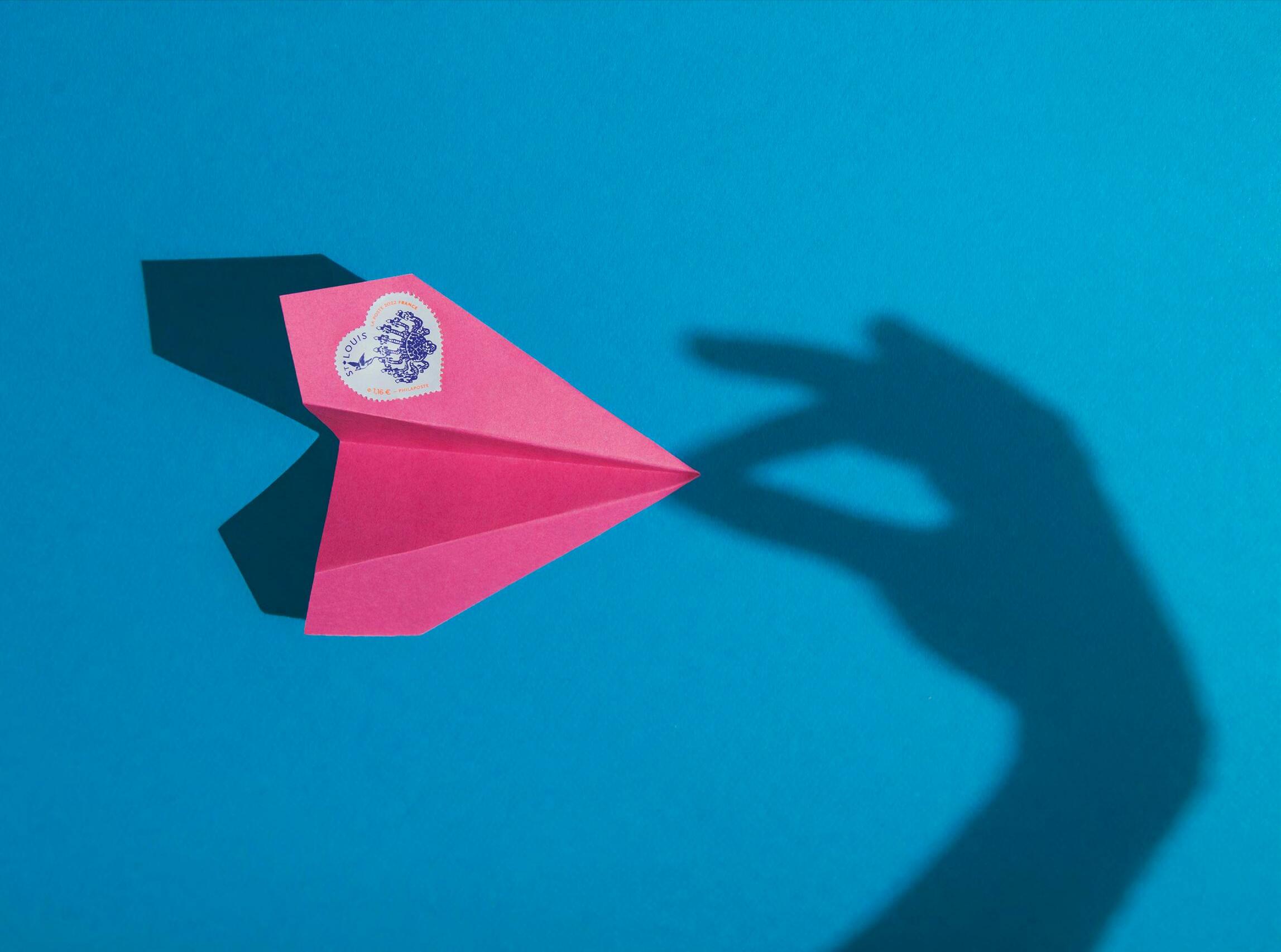
Histoire courte du lustre dans un cœur
The Tale of the Chandelier in a Heart
A bird carries a chandelier through the wind of the Vosges, beyond the mountains and seas, towards the French cities and distant countries that await Saint-Louis creations. This stamp combines the factory’s heritage — with chandeliers dating back to 1850 — and its modernity, including lighting collections that have been launched over the last ten years.
Once a year, a major lifestyle brand lends its history to a postage stamp, specially issued for Valentine’s Day. The Saint-Louis silvered bloc made in a run of four million. It celebrates the occasion with a beating heart, for crystal lovers and stamp collectors alike, in honour of the United Nations proclaiming 2022 the International Year of Glass.
Photography: Delphine Chanet
PARTNERSHIP
PARTENARIAT
PORTFOLIO
La directrice de l’École nationale supérieure de la photographie d’Arles ( ENSP ) revient sur le projet hors les murs organisé entre la manufacture et les étudiants de master. Texte : Sixtine Dubly / Exposition en 2021 à Arles : Du mistral au cristal

Marta Gili :
The director of the National School of Photography in Arles (ENSP), talks about the extra-mural project organised between the factory and the Master's students. Text: Sixtine Dubly / Exhibition in 2021 in Arles: “ From mistral to crystal”
PORTFOLIO
46
Marta Gili, “What we see is not the whole of reality”
« Ce que l’on voit n’est pas toute la réalité »
Previous page Antoine Denoual Above: François Charbonnier
PORTFOLIO
Saint-Louis — Pourquoi faire se rencontrer la photographie et l'art verrier ?
Marta Gili — Photographes et verriers partagent la maîtrise d’un savoir-faire et d’outils qu’ils mettent au service d’un regard, d’une créativité.
C’est donc naturellement qu’avec Anne Lhomme, Directrice Artistique de Saint-Louis, l’équipe de la manufacture et celle de l’école, nous avons imaginé une collaboration autour de l’idée d’une vision contemporaine de l’artisanat.
Ce partenariat consistait en une commande aux jeunes artistes ?
Cela a été un exercice passionnant d’échanges pour les élèves qui, en l’occurrence, ne connaissaient pas l’univers singulier du cristal. C’est pourquoi j’ai été ravie de voir aboutir ce projet hors les murs, qui est aussi le premier depuis mon arrivée à l’école, en 2019. Nous avons

pu le mener à bien malgré l’épidémie de Covid. Ces collaborations soulignent la capacité des artistes à concevoir, à sentir et à exprimer les métiers d’une façon différente.
À déconstruire les préjugés artistiques, sociaux et sociétaux et à proposer des perceptions et des perspectives nouvelles, appliquées ici à une manufacture.
La question de la lumière, commune aux deux métiers, a-t-elle constitué un point d’ancrage ?
La façon dont la lumière traverse la matière est à la base de la photographie. C’est à la fois un jeu technique et métaphorique, ce que l’on voit n’est pas toute la réalité.
L’image varie en fonction de qui en est l’auteur et de qui la regarde.
Je retrouve d’une certaine façon cette complexité des regards dans la taille du cristal qui diffracte la lumière, crée des projections et des réverbérations.
De la prise de vue à l’exposition, les étudiants ont-ils pu révéler la multiplicité de leurs savoir-faire ? Tous les savoir-faire de l’école de la prise de vue à l’impression, de la scénographie au commissariat ont été mis à profit pour réaliser ce projet, ensuite présenté à l’école sous la forme d’une exposition accompagnée d’un livret. J’ai été frappée de voir la façon dont les travaux des six photographes parcourent presque toute l’histoire photographique, de la période expérimentale des années 1920 et 1930 à celle des autoportraits et des identités des années 1980, en passant par l’influence cinématographique des années 1950 et 1960. Le projet a mobilisé un ensemble de possibles et d’inspirations. Il traduit bien le fait que la photographie est, comme le cristal, un outil pour raconter notre époque, qui emprunte au documentaire et à la fiction.
Saint-Louis — How did the relationship between photography and the glassmaker’s art begin?
Marta Gili — Photographers and glassmakers share a mastery of their respective expertise and the tools that they use to create a lens, and in their creativity. So, it is only natural that with Anne Lhomme, Artistic Director of Saint-Louis, the manufacture, and the school teams, together we imagined a collaboration around the idea of a contemporary vision of craftsmanship.
This partnership consisted of a commission from young artists?
It’s an exciting exchange exercise for students who, in this case, didn’t know the unique universe of crystal. This is why I was so delighted to see this extra-mural project come to fruition: it is the first of its kind
since I arrived at the school in 2019. We were able to carry on with it despite the Covid pandemic.
These collaborations highlight the ability of artists to conceive, feel and express crafts in a different way. To deconstruct artistic, social, and societal prejudices and to propose new perceptions and perspectives, applied here to a manufacture.
Was the question of light common to both art forms an anchor point?
The way light passes through a subject is the basis of photography.
It is both a technical and metaphorical play. What we see is not the whole of reality. The image varies depending on who made it and who is looking at it. In a way, I find this complexity of gazes in crystal cuttings, which diffract light and create projections and reverberations.
From the shoot to the exhibition, were the students able to reveal the multifaceted nature of their expertise?
All of the school’s expertise — from shooting to printing, from prop styling to curating — was used to produce this project, which was then presented to the school in the form of an exhibition and accompanying booklet. I was struck by how the work of the six photographers spans almost all of photographic history, from the experimental epoch of the 1920s and 1930s, to the portraits and identities of the 1980s, including the influence of 1950s and 1960s cinema. The project mobilised a suite of possibilities and inspirations. It showcases that photography, like crystal, is a tool to represent an era, borrowing from both documentary and fiction.
49PORTFOLIOFACETTES # 7 48
Page précédente / Ci-dessus /


5150PORTFOLIO
Laëtitia Danglade
Laëtitia Danglade


5352PORTFOLIO
Lucie Kerzerho
Lucie Kerzerho



5554PORTFOLIO
Julie Bouchardon
Théo Petit
LA MANUFACTURE
VUE PAR LAMIA ZIADÉ
L’artiste, auteure et dessinatrice Lamia Ziadé emprunte à son tour le chemin de la Moselle à la suite de Hugues Micol en 2020. Elle est ainsi la•le cinquième artiste à se rendre à la manufacture pour raconter en images la fabrication du cristal à Saint-Louis. Franco-libanaise, habitée par la question des identités arabes ses affres, ses grâces ,
Lamia Ziadé a trouvé à Saint-Louis les traces de ses ob sessions, notamment les objets en cristal, déjà présents au fil de ses récits dessinés. Vases, carafes, bouteilles y apparaissent comme les témoins de partages amicaux, de débordements sentimentaux, de la vie…
À la manufacture, qu’elle découvrait pour la première fois, l’artiste a aimé les techniques et les échelles qui ne sont pas celles que l’on croit. Les colosses verriers qui souf flent de délicats objets en cristal. Les solides meules avec lesquelles les tailleurs entaillent le cristal de fins décors. La manufacture lui a inspiré une collection dessinée d’objets et de situations qui se répondent sur une même page. Les saynètes de travail prises sur le vif dialoguent avec des vases anciens, patrimoine de la maison. L’ensemble crée un facettage inédit de la vie à Saint-Louis, une narration à l’éclectisme joyeux.
Lamia Ziadé, P.O.L. publications / My Port of Beirut, 2011 / Oh Night, Oh My Eyes, 2015 /
Lamia Ziadé, éditions P.O.L.
Mon port de Beyrouth, 2011 Ô nuit, ô mes yeux, 2015
THE FACTORY THROUGH THE EYES OF LAMIA ZIADÉ
The artist, author and designer Lamia Ziadé takes the Moselle road, following in the footsteps of Hugues Micol in 2020, making her the fifth artist to come to the factory and use images to tell the Saint-Louis story of crystal creation. Inspired by her Franco-Lebanese heritage, Lamia explores the themes of Middle Eastern identity and the graces and pangs that it brings. She found traces of her obsessions reflected at Saint-Louis, in particular a shared respect for crystal objects, both in the factory and in her artwork where vases, carafes and bottles appear as witnesses to sharing between friends, of outpourings of emotion, of life…
As she was discovering the factory for the first time, the artist was drawn to the techniques and scales that you wouldn’t necessarily expect. The giant glassmakers who blow delicate crystal objects. The solid wheels with which the cutters carve fine decorations into the crystal. The factory inspired a drawn collection of objects and situations that interact with each other on the same page. Work sketches taken from the lively dialogue with old vases, the heritage of the House. The collection creates an unprecedented facet of life in Saint-Louis, a narrative of joyful eclecticism.

57SKETCH
DESSIN


Cadence
Rencontre des lignes, pureté de la matière.
Encounter of the lines, purity of the material.
Rencontre entre une manufacture séculaire et un design contemporain, la collection Cadence se distingue par sa simplicité formelle. Le designer français Pierre Charpin a dessiné une collection complète : des pièces d’art de la table, de bar, de décoration ainsi qu’une vaste gamme de luminaires pensée pour un usage quotidien.
D’une pièce à l’autre, les lignes du dessin de Pierre Charpin se rencontrent et rythment la matière des objets de manière régulière, révélant sa pureté. Une vision radicalement moderne et intimiste du cristal : des objets accessibles et justes, des formes pures qui vont à l’essentiel.
Born from the combination of generations of craft expertise and contemporary design, the Cadence collection makes a statement with its modernity and simplicity.
French designer Pierre Charpin composed a new contemporary lifestyle collection: from tableware to lighting, through barware and decoration, the objects are designed for everyday use.
Based on the interplay of horizontal and vertical lines, Pierre Charpin’s drawings give rhythm to material, enhancing its brilliance and clarity.
A definitely modern vision of crystal: a collection of accessible objects that rings true, in tune with today.
3Cadence
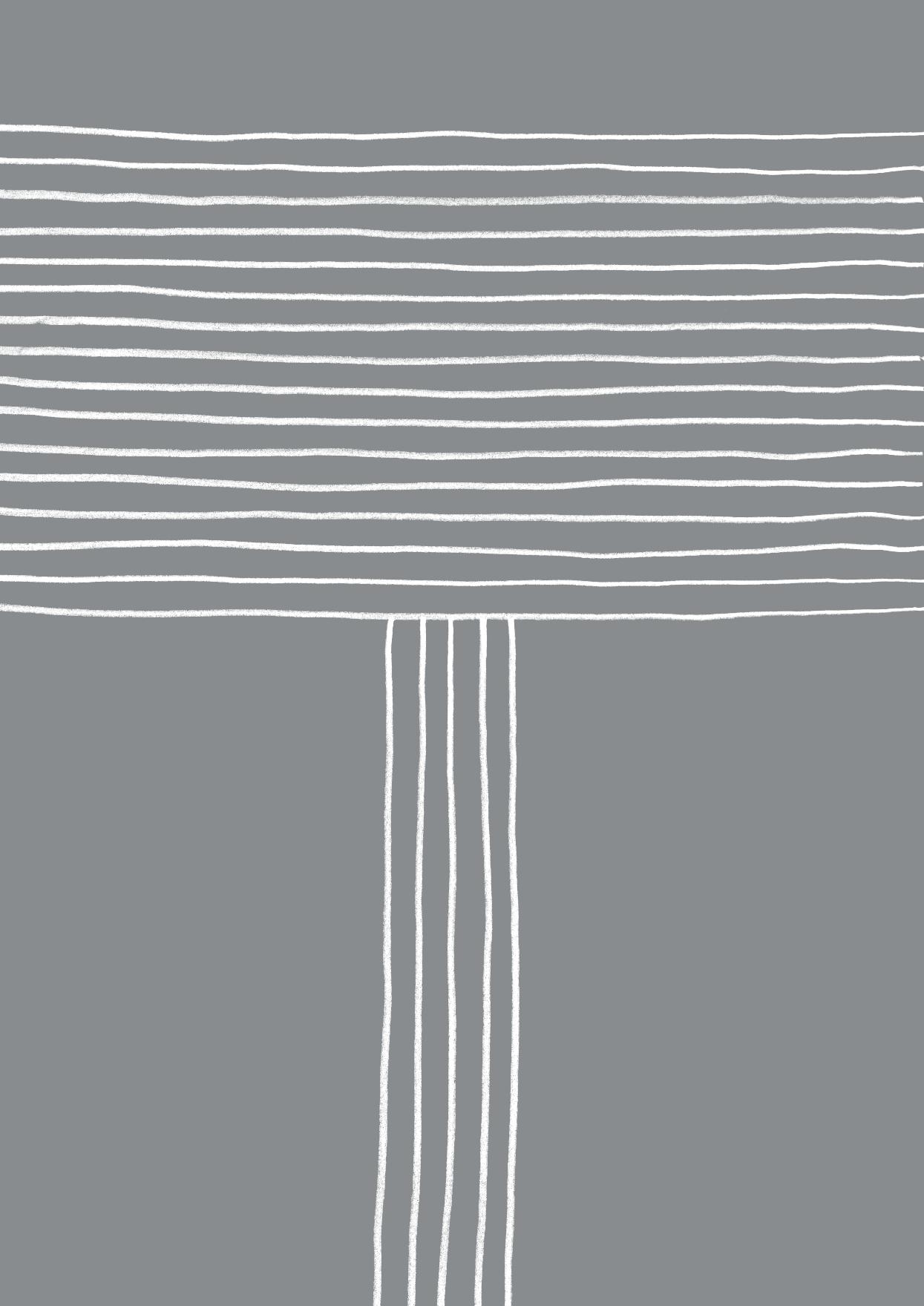
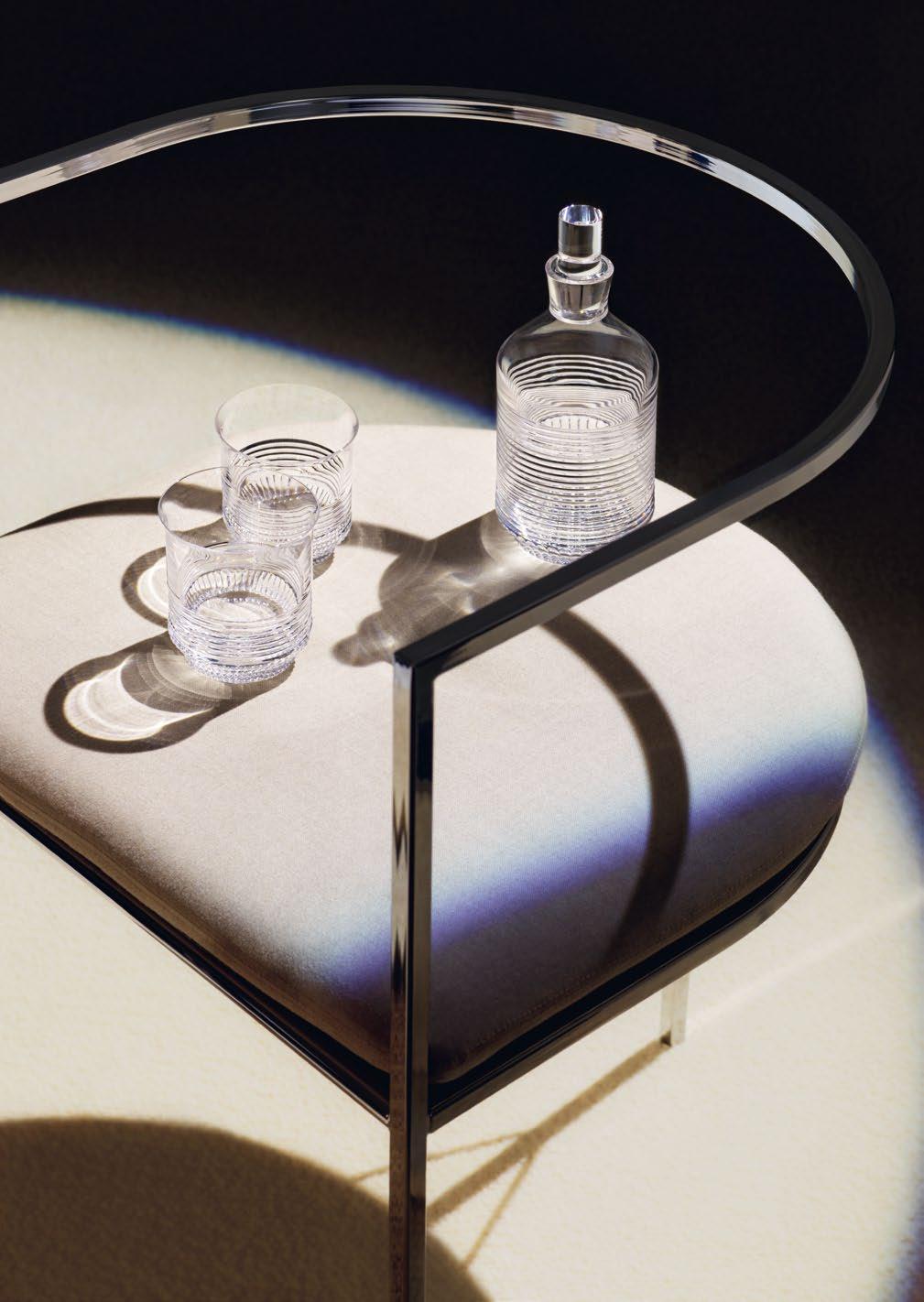


Tableware
Art de la table

Tableware

Carafe à vin H : 215 mm, Ø : 181 mm, Vol : 130 cl
Wine carafe H: 8.5 in, Ø: 7.1 in, Vol: 44 fl oz

Verre à vin no3 H : 130 mm, Ø : 82 mm, Vol : 18 cl
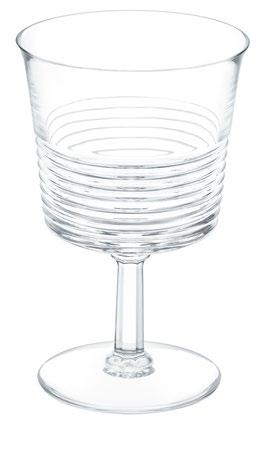
Wine glass #3 H: 5.1 in, Ø: 3.2 in, Vol: 6.1 fl oz
Disponible avec un filet or Available with gold rim
Verre à eau no2 H : 142 mm, Ø : 91 mm, Vol : 23 cl
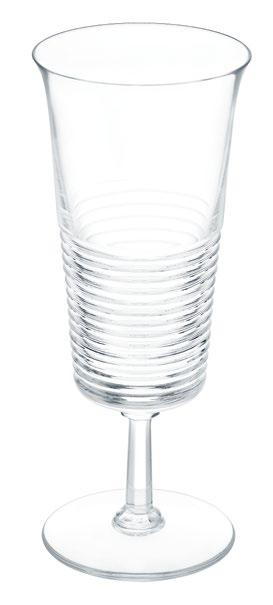



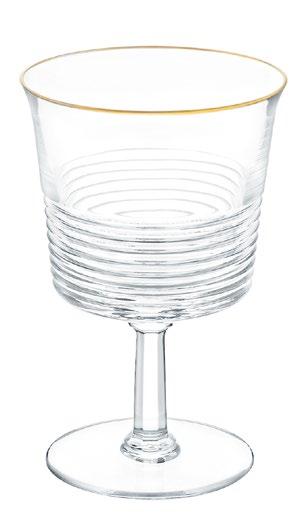
Water glass #2 H: 5.6 in, Ø: 3.6 in, Vol: 7.8 fl oz
Disponible avec un filet or Available with gold rim
Flûte à champagne H : 180 mm, Ø : 70 mm, Vol : 19 cl
Champagne flute H: 7.1 in, Ø: 2.8 in, Vol: 6.4 fl oz
Disponible avec un filet or Available with gold rim
Table Table 7Cadence6 Cadence
Flacon rond H : 222 mm, Ø : 99 mm, Vol : 62 cl
Round decanter H: 8.8 in, Ø: 3.9 in, Vol: 21 fl oz

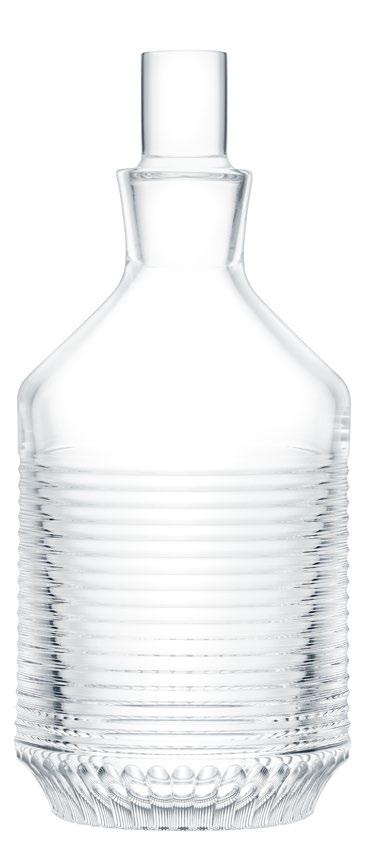
Gobelet cylindrique moyen modèle H : 90 mm, Ø : 86 mm, Vol : 28 cl
Medium cylindrical tumbler H: 3.5 in, Ø: 3.4 in, Vol: 9.5 fl oz





Disponible avec un filet or Available with gold rim
Gobelet cylindrique grand modèle H : 100 mm, Ø : 90 mm, Vol : 36 cl
Large cylindrical tumbler H: 3.9 in, Ø: 3.5 in, Vol: 12.2 fl oz
Disponible avec un filet or Available with gold rim
Chope H : 140 mm, Ø : 81 mm, Vol : 36 cl
Highball H: 5.5 in, Ø: 3.2 in, Vol: 12.2 fl oz
Disponible avec un filet or Available with gold rim
Bar Bar
9Cadence8 Cadence





Décoration
Decoration


Vase petit modèle H : 250 mm, Ø : 128 mm
Small vase H: 9.8 in, Ø: 5 in


Vase grand modèle H : 320 mm, Ø : 164 mm
Large vase H: 12.6 in, Ø: 6.5 in
Vases Vases
13Cadence12 Cadence
Coupe moyen modèle H : 55 mm, Ø : 220 mm
Medium bowl H: 2.2 in, Ø: 8.7 in
Coupe grand modèle H : 60 mm, Ø : 280 mm
Large bowl H: 2.4 in, Ø: 11 in


14 Cadence Coupes Bowls
15Cadence
Photophore H : 160 mm, Ø : 123 mm
Photophore H: 6.3 in, Ø: 4.8 in
Bougeoir H : 90 mm, Ø : 71 mm


Candlestick H: 3.5 in, Ø: 2.8 in
Boîte H : 70 mm, Ø : 150 mm Box H: 2.8 in, Ø: 5.9 in

Bougeoirs Candlesticks Boîte Box
17Cadence16 Cadence





Lampes à poser
Table lamps


Petites lampes à poser Small table lamps
Lampe à poser petit modèle – Abat-jour cristal H : 340 mm, Ø : 125 mm
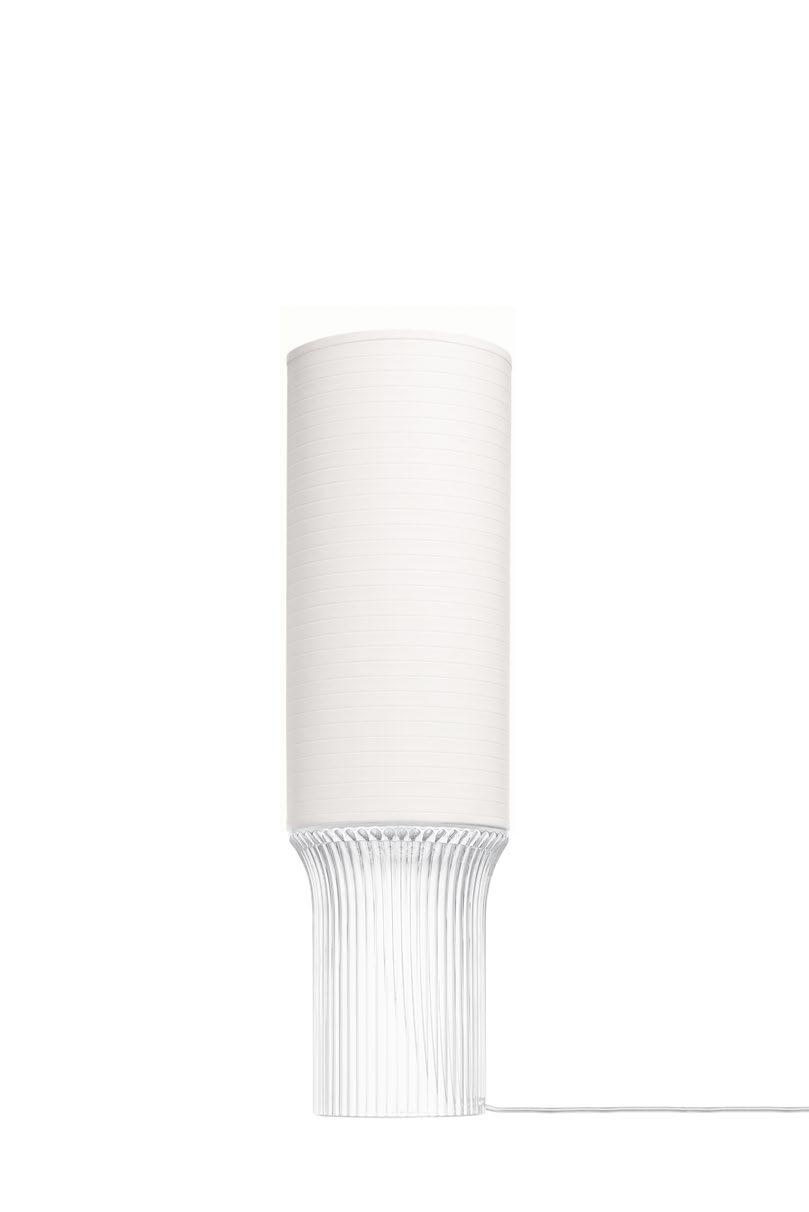

Small table lamp – Crystal lampshade H: 13.4 in, Ø: 4.9 in
Lampe à poser petit modèle – Abat-jour papier H : 420 mm, Ø : 125 mm
Small table lamp – Paper lampshade H: 16.5 in, Ø: 4.9 in
21Cadence20 Cadence
Lampes à poser larges Large table lamps
Lampe à poser modèle large – Abat-jour cristal H : 325 mm, Ø : 240 mm
Large table lamp – Crystal lampshade H: 12.8 in, Ø: 9.4 in

Lampe à poser modèle large – Abat-jour papier H : 325 mm, Ø : 240 mm
Large table lamp – Paper lampshade H: 12.8 in, Ø: 9.4 in

23Cadence22 Cadence
Lampes à poser hautes Tall table lamps
Lampe à poser modèle haut – Abat-jour cristal H : 555 mm, Ø : 210 mm
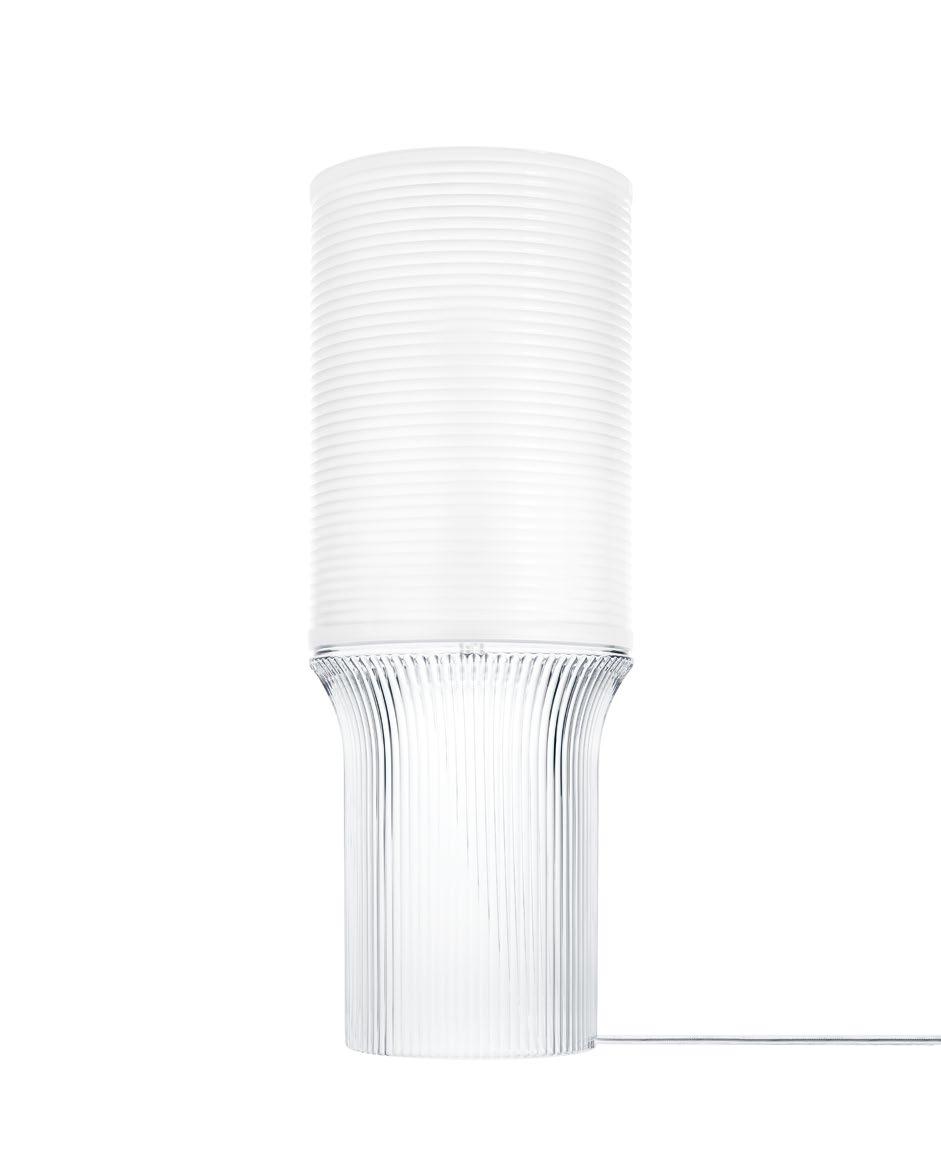
Tall table lamp – Crystal lampshade H: 21.9 in, Ø: 8.3 in
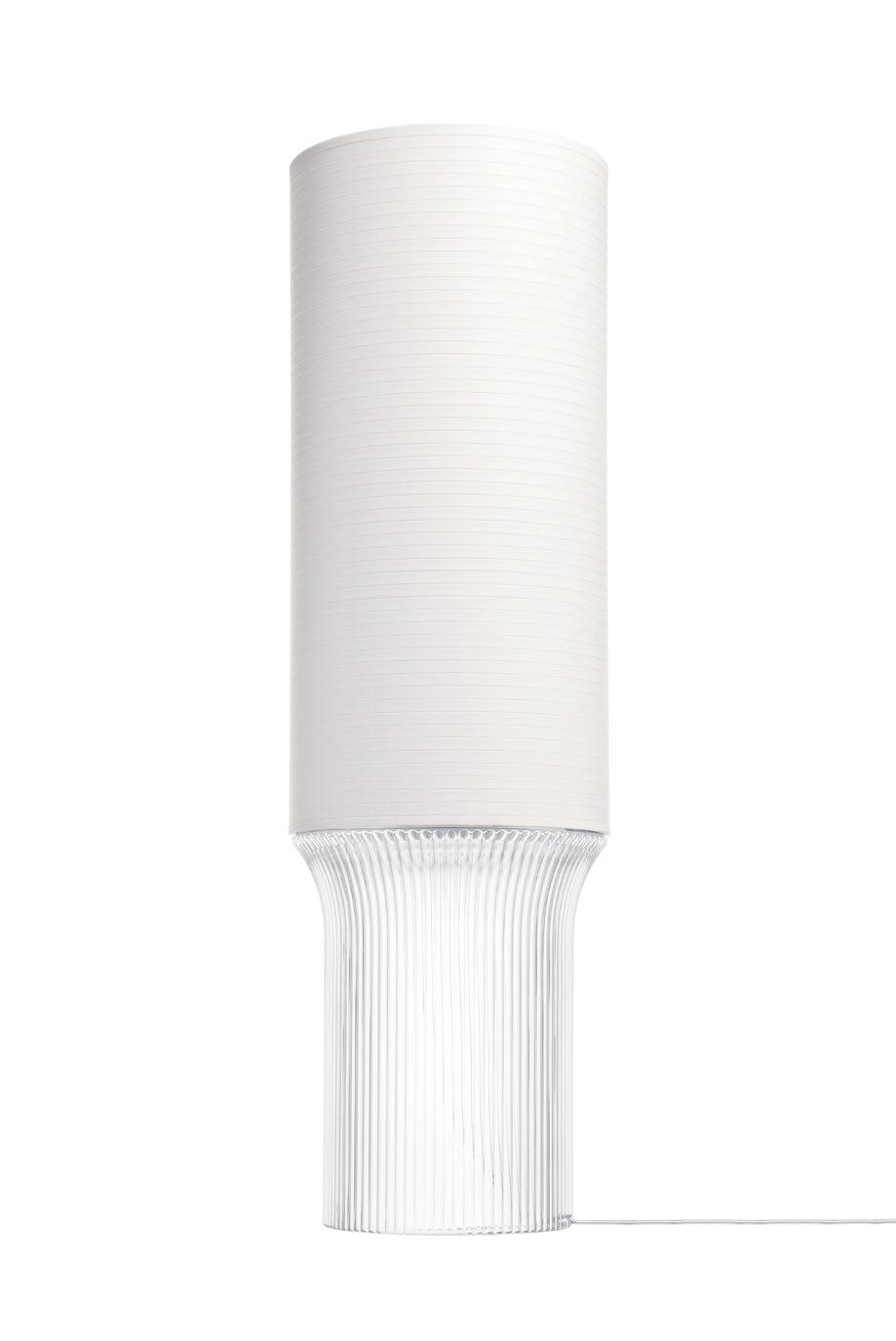
Lampe à poser modèle haut – Abat-jour papier H : 690 mm, Ø : 210 mm
Tall table lamp – Paper lampshade H: 27.2 in, Ø: 8.3 in
25Cadence24 Cadence



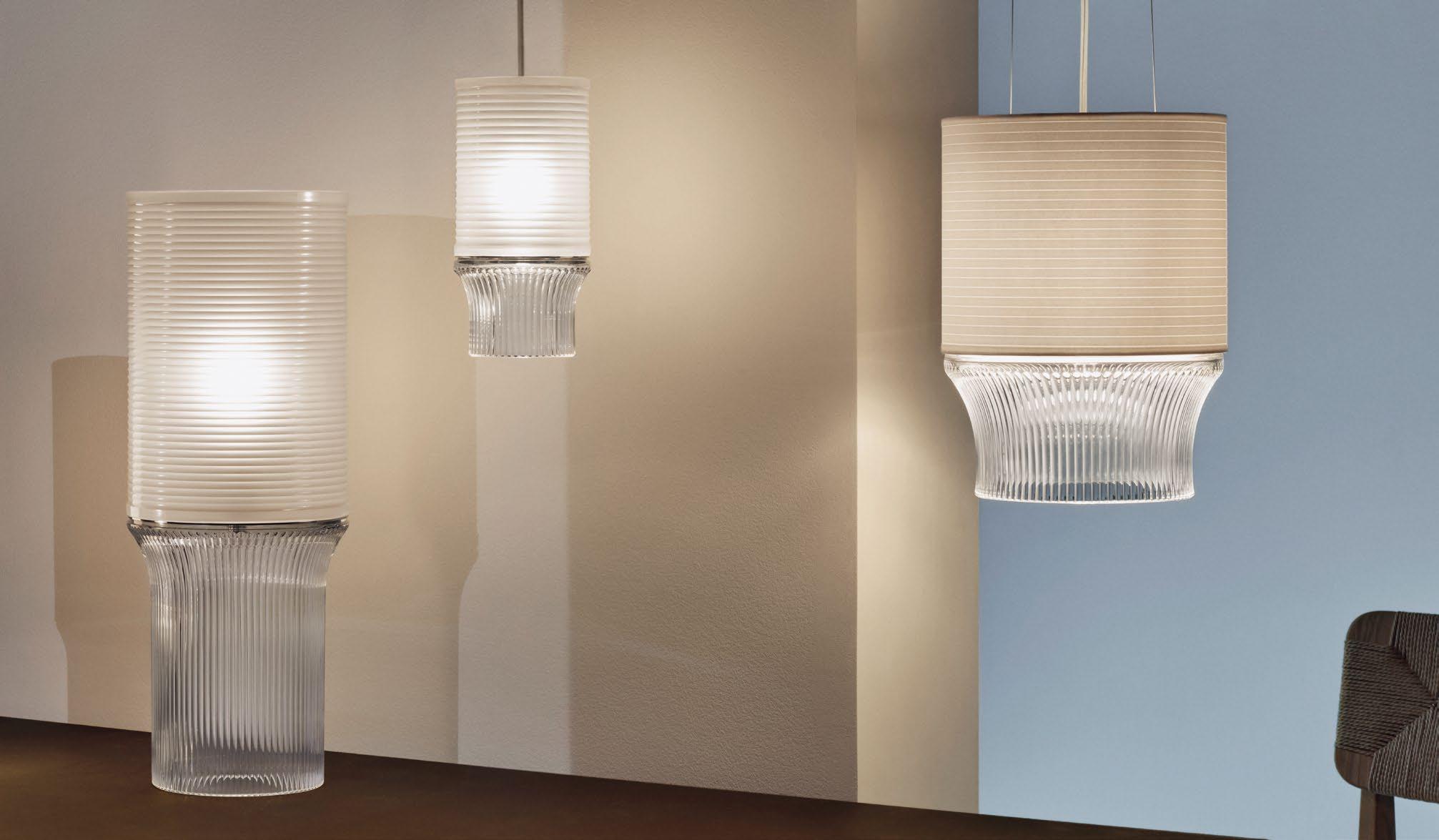 Chandelier
Chandelier
Suspensions

Pendant lights

Petites suspensions Small pendant lights
Petite suspension – Abat-jour cristal H : 250 mm, Ø : 125 mm



Small pendant light – Crystal lampshade H: 9.8 in, Ø: 4.9 in
Disponible en finition dorée ou chromée Available in chrome-plated finish or chrome finish
Petite suspension – Abat-jour papier H : 250 mm, Ø : 125 mm
Small pendant light – Paper lampshade H: 9.8 in, Ø: 4.9 in




Disponible en finition dorée ou chromée Available in chrome-plated finish or chrome finish

29Cadence28 Cadence
Suspensions larges Large pendant lights
Suspension modèle large – Abat-jour cristal H : 325 mm, Ø : 240 mm


Large pendant light – Crystal lampshade H: 12.9 in, Ø: 9.4 in
Disponible en finition dorée ou chromée Available in chrome-plated finish or chrome finish
Suspension modèle large – Abat-jour papier H : 325 mm, Ø : 240 mm
Large pendant light – Paper lampshade H: 12.9 in, Ø: 9.4 in
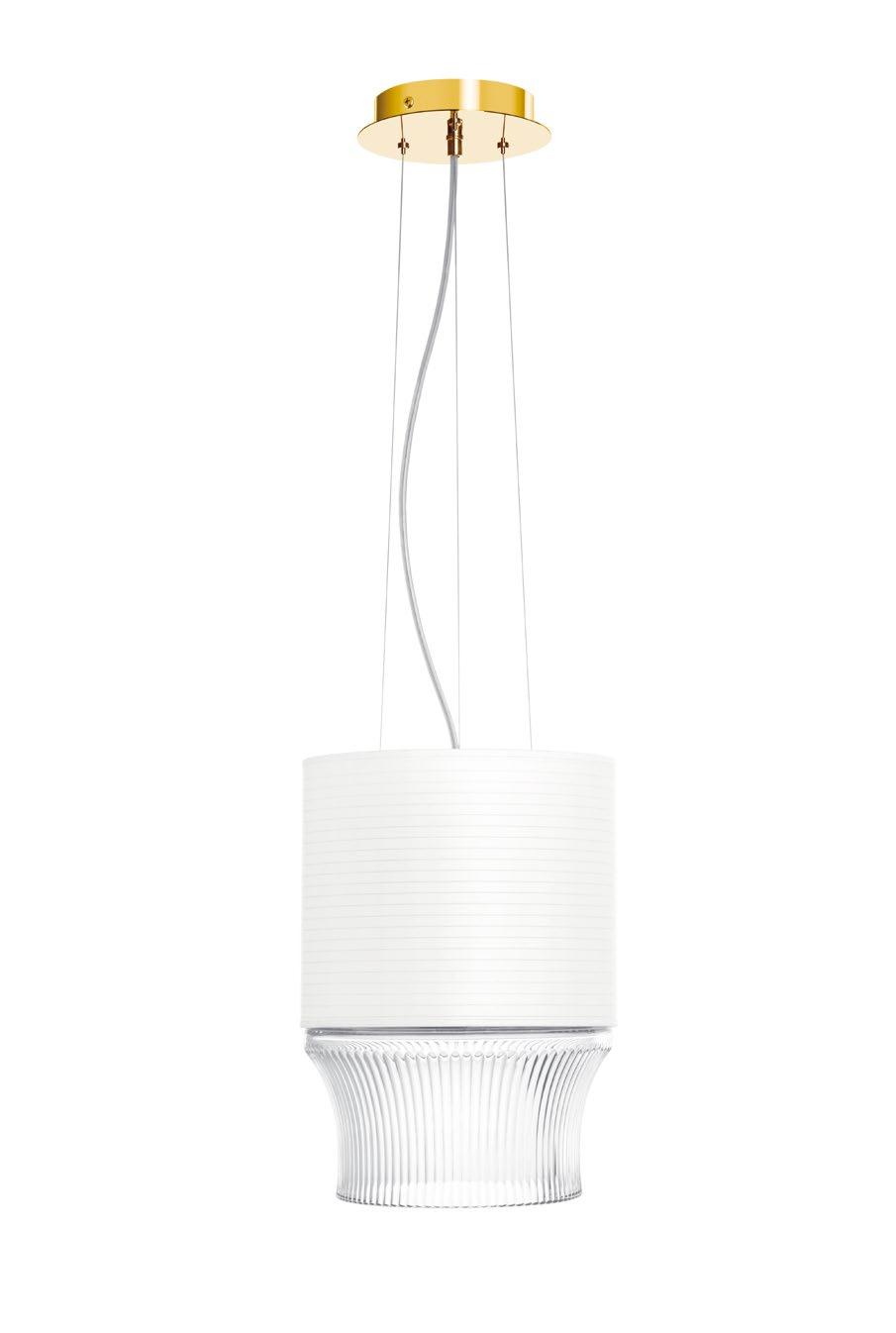


Disponible en finition dorée ou chromée Available in chrome-plated finish or chrome finish

31Cadence
30 Cadence
Né en 1962, le designer français Pierre Charpin se consacre à la conception d’objets, de meubles et de scénographies. Il mène des projets d’édition pour des entreprises de renommée internationale comme Alessi, Hermès, Saint-Louis ou la Manufacture nationale de Sèvres. Il a reçu de nombreux prix pour son travail : lauréat du concours lancé en 2004 par la Société Eau de Paris, sélection officielle pour le Prix « Compasso d’Oro » en 2005, « Créateur de l’année » au Salon du meuble de Paris en 2005 et 2017. Plusieurs de ses œuvres sont conservées dans les collections du MNAM –Centre Georges Pompidou.

Born in 1962, the French designer Pierre Charpin has devoted himself to designing objects, furniture and set design. He leads design projects for internationally renowned brands like Alessi, Hermès, Saint-Louis and the National Manufacture of Sèvres (France). He has received numerous prizes for his work. He was awarded first prize at the 2004 competition run by the French Company Eau de Paris, was officially selected for the “Compasso d’Oro” in 2005, and earned the title of Creator of the Year at the Salon du meuble de Paris (Paris Furniture Fair) in 2005 and 2017. Several of his designs are held in the collections of the MNAM – Centre Georges Pompidou (Paris, France).
« Je suis parti de la matière. Les lignes de Saint-Louis sont exigeantes, elles nécessitent une parfaite maîtrise de la taille. En dessinant, j’avais en tête les gestes verriers. Les lignes de Cadence qui se rencontrent et se répètent sont un hommage à la virtuosité des artisans »
“It was impossible to ignore the material. Saint-Louis lines are demanding, they require perfect control of the crystal cutting. While drawing, I was thinking of the glassmakers know how. Cadence’s lines meeting and repeating themselves are a tribute to the virtuosity of Saint-Louis craftsmen”

Pierre Charpin
« Tout naît du dessin »
“For me, everything comes from drawing.”
32 Cadence
Pierre

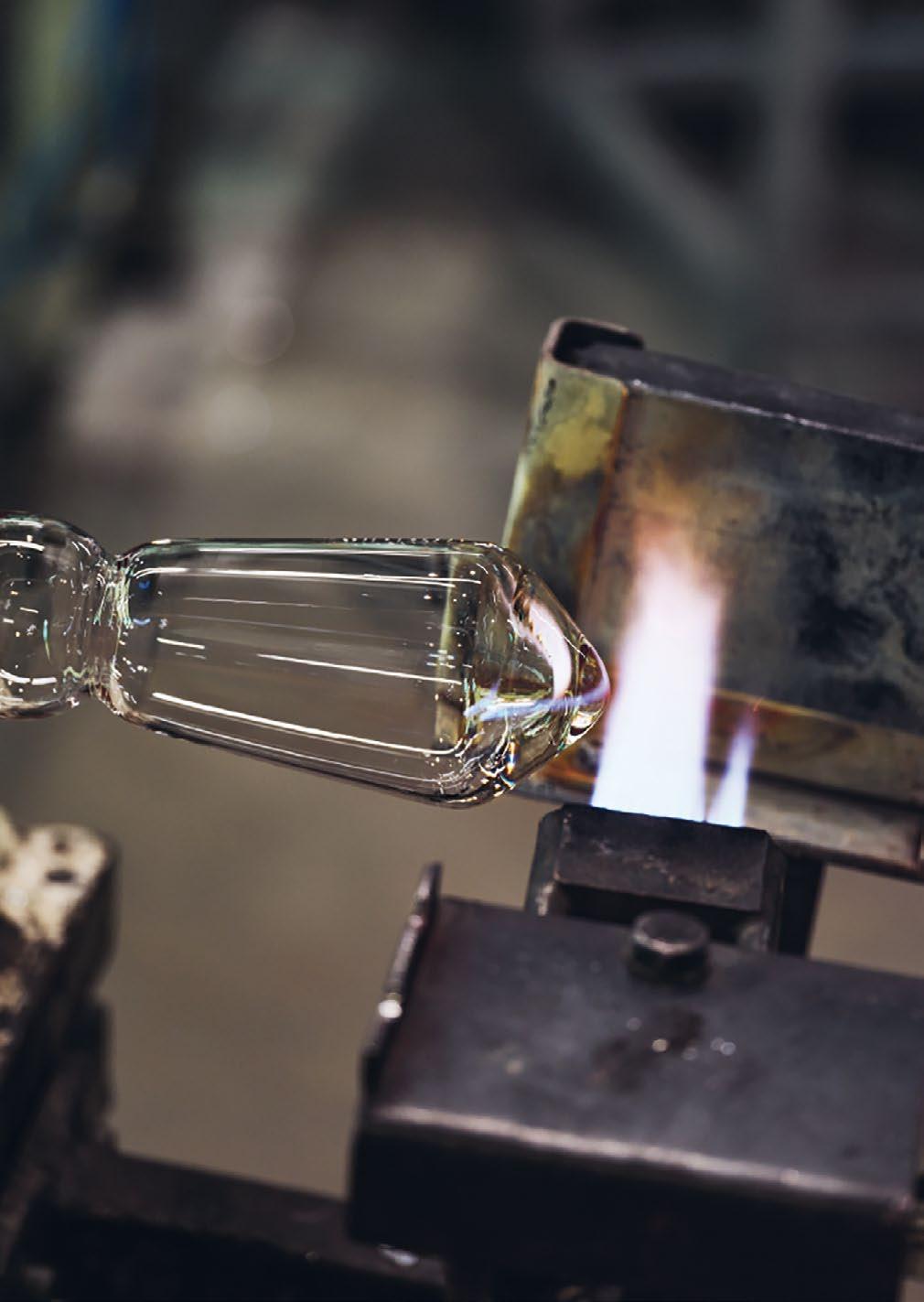

Charpin 32 Cadence

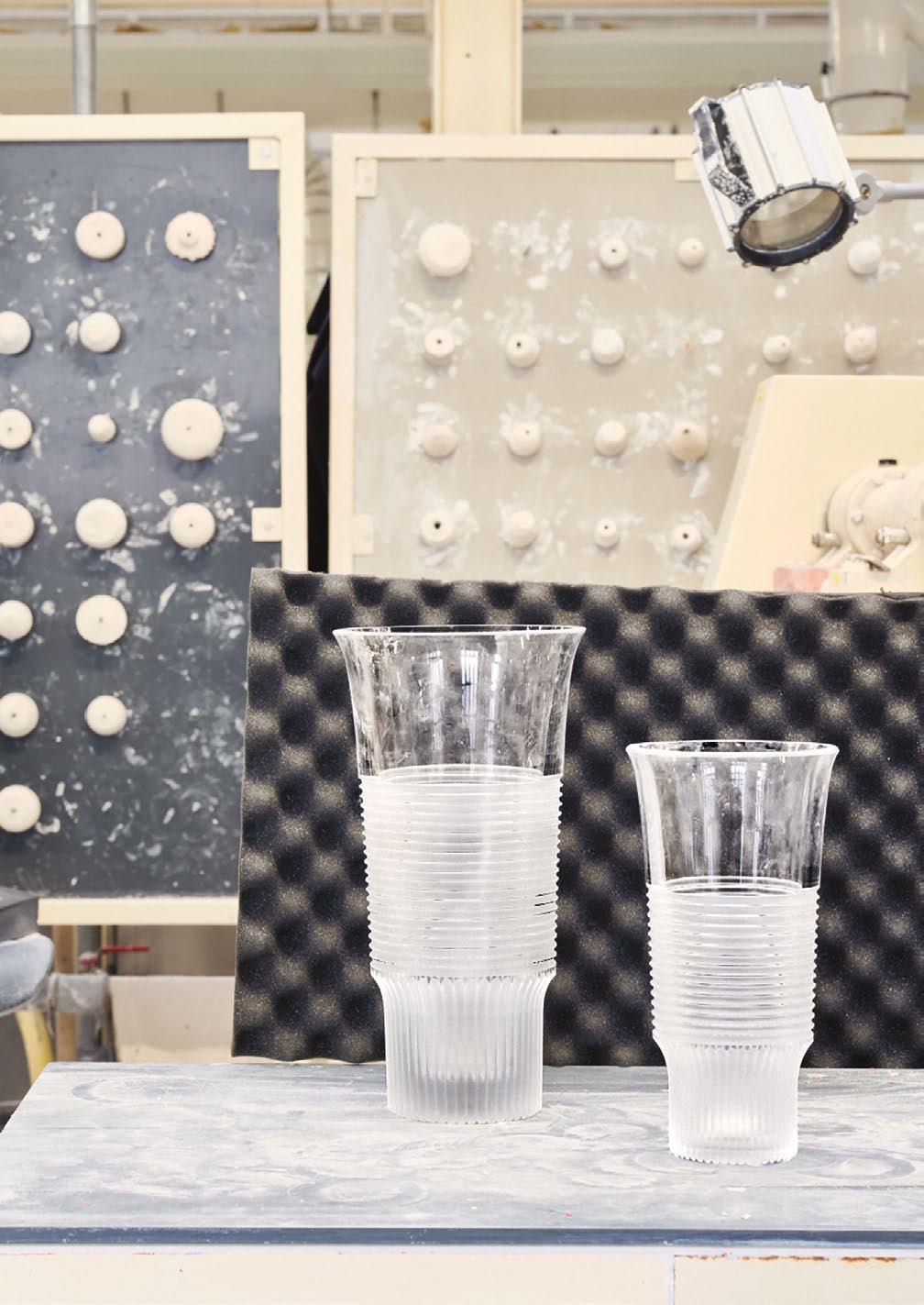
Pierre Charpin 32 Cadence
Carafe à vin Wine carafe

Verre à vin no3 Wine glass #3 Verre à eau no2 Water glass #2 Flûte à champagne Champagne flute












Bougeoir Candlestick Boîte Box Photophore Photophore
Coupe moyen modèle Medium bowl Coupe grand modèle Large bowl
Flacon rond Round decanter Gobelet moyen Medium tumbler Grand gobelet Large tumbler Chope Highball



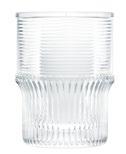

Vase petit modèle Small vase Vase grand modèle Large vase
Suspension modèle large Large pendant light Suspension petit modèle Small pendant light




Lampe à poser modèle large Large table lamp Lampe à poser modèle haut Tall table lamp


Lampe à poser petit modèle Small table lamp
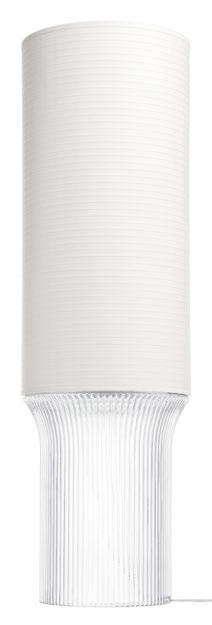






Lampes –Abat-jour cristal Lamps –Crystal lampshade Lampes –Abat-jour papier Lamps –Paper lampshade
Photos d’ambiance et photos produits / Still life visuals and product images :
© Maxime Tétard
Portrait de Pierre Charpin et visuels savoir-faire /
Portrait of Pierre Charpin and know-how visuals :
© Jean-Philippe Mesguen
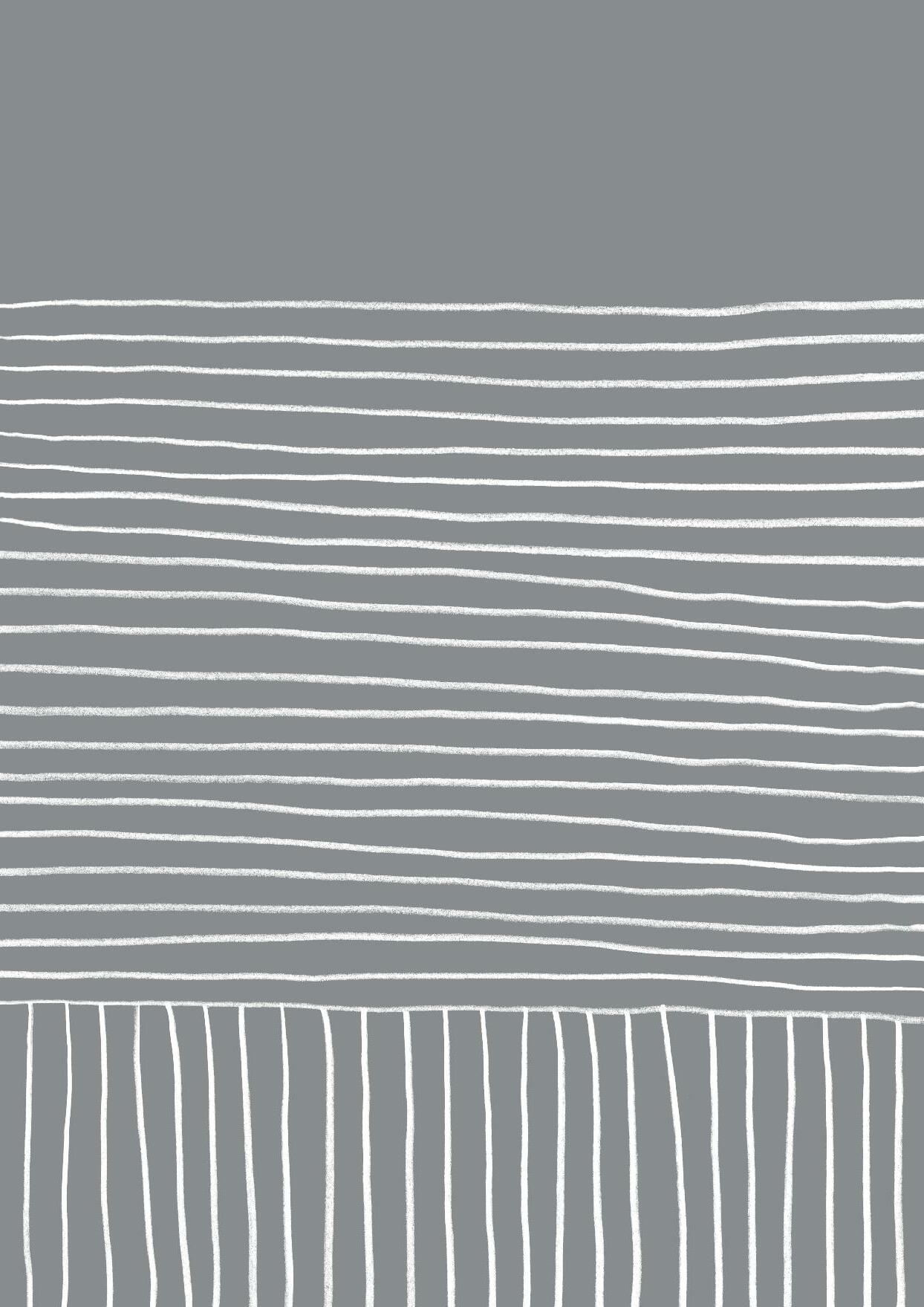


saint-louis.com @saintlouiscrystal






























































































 Chandelier
Chandelier













































